India-Malaysia Cooperation in Critical Minerals and Rare Earth Elements
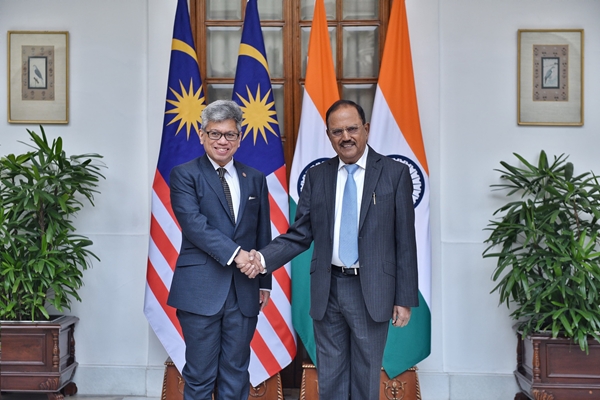
- 08 Jan 2025
In News:
- On January 7, 2025, during the inaugural India-Malaysia Security Dialogue in New Delhi, both countries agreed to enhance cooperation in critical minerals and rare earth elements (REEs).
- The meeting was co-chaired by India's National Security Adviser, Ajit Doval, and Malaysia’s Director General of the National Security Council, Raja Dato Nushirwan Bin Zainal Abidin.
- The agreement follows the upgrade of bilateral relations to a Comprehensive Strategic Partnership during Malaysian Prime Minister Anwar Ibrahim’s visit to India in August 2024.
- The dialogue also focused on other security aspects such as counter-terrorism, cyber security, and maritime security.
Importance of Critical Minerals and REEs:
-
- Critical Minerals: These are essential for a variety of industries like IT, energy, and defense. They are integral to manufacturing electric vehicle batteries, solar cells, and advanced electronics.
-
- Rare Earth Elements (REEs): Used in high-tech applications such as wind turbines, electric vehicle engines, and high-powered magnets. While their extraction is not rare, it is technically difficult due to their complex nature.
Strategic Relevance:
-
- Global Demand: The global demand for critical minerals is rising, and both countries see it as a strategic necessity to ensure a stable supply of these materials.
- Malaysia's Resources: Malaysia possesses significant deposits of non-rare radioactive earth ores, including essential REEs like Neodymium (Nd), Dysprosium (Dy), and Praseodymium (Pr). These elements are crucial in today’s technological innovations.
- India’s Dependence on Imports: India, which currently imports a substantial portion of its critical minerals, aims to diversify its supply chain by collaborating with Malaysia.
Sustainability and Ecological Accountability:
-
- Both countries recognize the environmental challenges of mining these critical resources. Malaysia aims to adopt responsible mining practices that minimize ecological harm.
- India seeks to ensure a supply chain that aligns with sustainable development goals, balancing economic needs with environmental responsibilities.
Enhancing Supply Chain Resilience:
-
- Diversification of Supply Chain: This partnership aims to reduce India’s dependency on a limited number of countries for critical minerals, enhancing resilience against global supply chain disruptions.
- Collaboration in Extraction and Processing: Both nations are exploring joint ventures in the exploration, extraction, and processing of critical minerals to boost their technological and economic standing globally.
Future Prospects:
-
- The institutionalization of this dialogue through annual meetings is expected to strengthen bilateral cooperation in the critical minerals sector.
- Increased cooperation is likely to enhance economic growth for both countries, aligning them strategically in the global minerals market as demand for these resources continues to soar.
Broader Security Cooperation:
-
- Beyond critical minerals, the India-Malaysia Security Dialogue explored enhanced collaboration in areas like counter-terrorism, cyber security, maritime security, and defense industries.
- This broadening of security cooperation complements the strategic minerals partnership, further solidifying the bilateral ties between the two nations.
Project VISTAAR
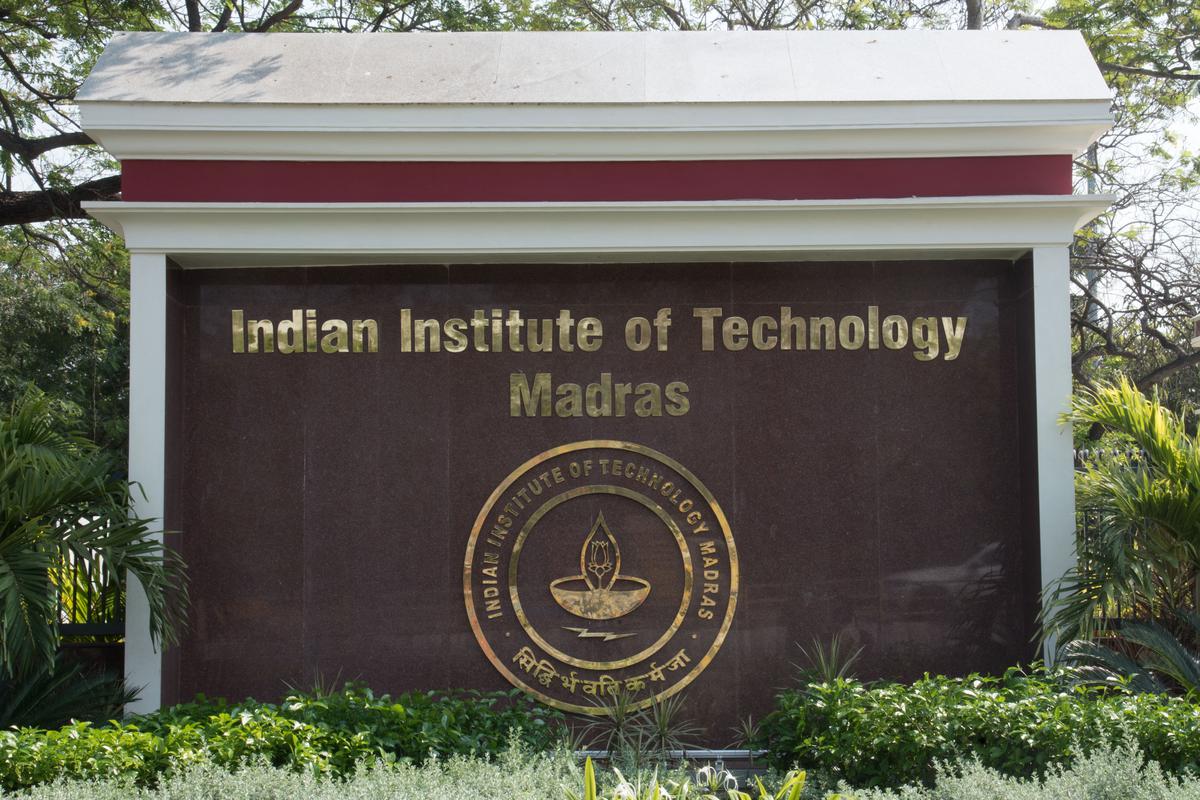
- 04 Jan 2025
In News:
IIT Madras has partnered with the Ministry of Agriculture and Farmers’ Welfare on Project VISTAAR (Virtually Integrated System to Access Agricultural Resources). MoU signed between the Ministry and IIT Madras to integrate information about agricultural start-ups into the VISTAAR platform.
Key Highlights:
Project Objectives:
- Digitalisation of Agricultural Extension: To enhance the efficiency and effectiveness of the agricultural extension system through digital platforms.
- Access to Start-Up Innovations: Provide farmers easy access to over 12,000 start-ups in agriculture and allied sectors, connecting them to technological solutions and innovations.
- Support for Sustainable Agriculture: Focus on making farming more sustainable and climate-resilient by promoting adoption of innovative technologies.
Key Features of VISTAAR:
- Integration of start-up data via IIT Madras' startup information platform and its incubatee, YNOS Venture Engine.
- Advisory services covering:
- Crop production
- Marketing
- Value addition
- Supply chain management
- Information on government schemes for agriculture, allied sectors, and rural development.
- Real-time, contextual, and accurate information to enhance decision-making and improve farming practices.
Significance of the Project:
- The platform will expand the outreach of agricultural extension services, providing support to farmers across India.
- It will ensure farmers access high-quality advisory services that are critical for improving productivity and income.
- Integration of start-up-driven innovations will aid in the adoption of climate-resilient farming practices.
- Timely and accurate information will empower farmers to make informed decisions and improve the efficiency of agricultural processes.
Impact on Farmers:
- Digitalisation will provide farmers with easier access to expert advice and resources, enhancing productivity.
- Improved access to government schemes ensures farmers can avail themselves of financial and technical support for development.
- The project aligns with national objectives of enhancing agriculture’s contribution to India’s economy and ensuring food security.
Chinar Boat Race 2024
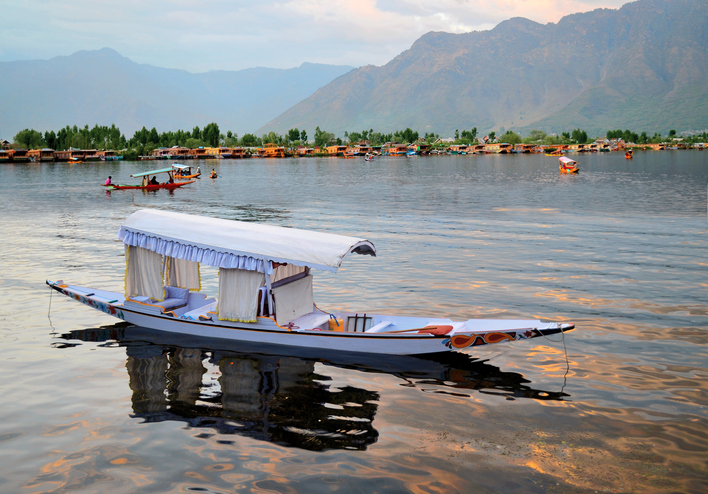
- 24 Nov 2024
In News:
- The Chinar Boat Race 2024 was successfully organized in Dal Lake, Srinagar, Jammu and Kashmir.
Key Highlights:
- Organizers:The event was hosted by the Indian Army in collaboration with White Globe NGO and the Lake Conservation and Management Authority (LCMA).
- Purpose:The race aimed to celebrate Kashmir’s culture and traditions while promoting conservation of Dal Lake.The event emphasized the ecological importance of Dal Lake and the need for its protection.
- Cultural Impact:The race attracted a large crowd of both locals and tourists, highlighting the vibrant culture of Kashmir.The event fostered a sense of community and unity, with people cheering for the participants.
- Military Engagement:The Army organizes sports and cultural events in the region to strengthen Army-public relationships, engage local youth, and promote an honourable profession in the military.
Dal Lake Overview:
- Location: Situated in Srinagar, Jammu and Kashmir, surrounded by the PirPanjal mountains.
- Area: 18 sq. km (lake); part of a 21.1 sq. km wetland.
- Islands: Includes 3 islands, two marked by Chinar trees: Roph Lank (Silver Island) and Sone Lank (Gold Island).
- Significance: Known as the “Jewel in the crown of Kashmir” or “Srinagar’s Jewel”.
- Floating Market: Famous for its floating market where vendors use wooden boats (Shikaras) to sell goods.
- Temperature: Can drop to −11°C in winter, sometimes freezing the lake.
11th ASEAN Defence Ministers’ Meeting-Plus (ADMM-Plus)
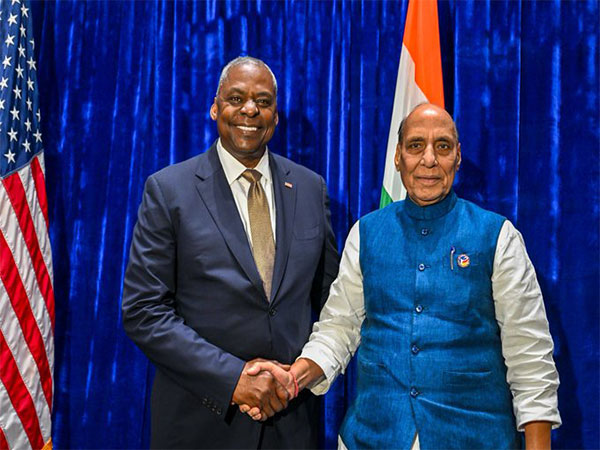
- 23 Nov 2024
In News:
The 11th ADMM-Plus held in Vientiane, Laos saw Union Defence Minister Rajnath Singh engage in discussions with his counterparts from the United States, Japan, and the Philippines.
Focus: The talks centered on strengthening defence partnerships, regional security, and enhancing cooperation among Indo-Pacific nations.
ASEAN Defence Ministers’ Meeting-Plus (ADMM-Plus):
- Platform for Dialogue: The ADMM-Plus is a key platform for ASEAN and its eight Dialogue Partners—Australia, China, India, Japan, New Zealand, Republic of Korea, Russia, and the United States.
- Establishment: The inaugural ADMM-Plus was held in HàN?i, Vietnam on 12 October 2010.
- Annual Meetings: Since 2017, the ADMM-Plus has met annually to enhance dialogue and cooperation amidst an increasingly complex regional security environment.
Objectives:
- Capacity Building: To aid ASEAN members in addressing shared security challenges.
- Promote Trust and Transparency: Enhance mutual trust and confidence between ASEAN and partner nations.
- Regional Peace and Stability: Focus on cooperation in defence and security to counter transnational security challenges.
- ASEAN Security Community: Contribute to realizing the ASEAN Security Community, as per the Bali Concord II, aiming for peace, stability, democracy, and prosperity in the region.
- Vientiane Action Programme: Facilitate ASEAN's efforts towards a peaceful, secure, and prosperous ASEAN with outward-looking relations with Dialogue Partners.
India’s First AI Data Bank

- 22 Nov 2024
In News:
The Ministry of Science and Technologyrecently launched India’s first Artificial Intelligence (AI) data bank that is aimed at propelling innovation and boosting the country’s national securityat the 7th Edition of the ASSOCHAM AI Leadership Meet 2024.
-
- The event theme: “AI for India: Advancing India’s AI Development – Innovation, Ethics, and Governance”.
Key Highlights:
- Objective:
- Propel innovation and enhance national security.
- Provide access to diverse, high-quality datasets for creating scalable and inclusive AI solutions.
- Key Features of the AI Data Bank:
- Target Audience: Researchers, startups, and developers.
- Data Types: Satellite, drone, and IoT data.
- Purpose:
- To enhance national security through real-time analytics.
- Enable predictive analytics for disaster management and cybersecurity.
Strategic Importance of AI in India:
- National Security: AI to strengthen national security by providing real-time analytics from satellite, drone, and IoT data.
- AI for Development:
- AI’s role in reshaping sectors like governance, business, healthcare, education, and space exploration.
- AI as a tool for economic growth, addressing climate change, improving public service delivery, and ensuring national security.
- Ethics and Governance:
- Ensuring responsible AI use with optimal handling.
- Addressing algorithmic bias and data privacy through robust governance frameworks.
- Commitment to transparent and fair AI systems that empower people rather than replace them.
- AI in Disaster Management and Cybersecurity:
- Aligning with India’s goals to use AI for predictive analytics in disaster management.
- Enhancing cybersecurity through AI technologies.
Government’s Vision on AI:
- Empowering Citizens: AI must bridge divides and ensure equitable access to its benefits.
- AI as Backbone for Future Development: India’s focus on making AI an integral part of its future economic and technological growth.
Exercise PoorviPrahar
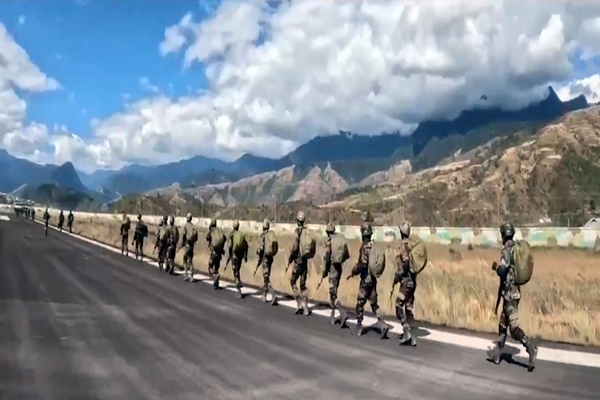
- 17 Nov 2024
In News:
- From November 10 to 18, 2024, the Indian Army is conducting a high-intensity tri-services exercise named PoorviPrahar in the forward areas of Arunachal Pradesh.
- The exercise aims to enhance the combat effectiveness and coordination between the Indian Army, Navy, and Air Force, focusing on integrated joint operations in the challenging mountainous terrain of the region.
About Exercise PoorviPrahar
Objective: The primary goal of Exercise PoorviPrahar is to hone the combat readiness and synergy across the three branches of the Indian Armed Forces. It is designed to improve their ability to conduct integrated joint operations, especially in the difficult terrain of Arunachal Pradesh, which is crucial due to the region's strategic location along India's eastern frontier.
Key Features of the Exercise:
- Multidomain Integration:The exercise involves land, air, and sea operations, demonstrating India's capability to conduct multi-domain operations. This showcases the Indian Armed Forces' preparedness to tackle threats across all three domains simultaneously.
- Advanced Military Platforms:
- Aircraft: Advanced fighter jets, reconnaissance aircraft.
- Helicopters: Including Chinook heavy-lift helicopters and Advanced Light Helicopters (ALH Rudra).
- Artillery: The exercise makes use of the M777 Ultra-Light Howitzers, which provide mobility and precision firepower in rugged terrains.
- Swarm Drones and Loitering Munitions: These cutting-edge technologies enable precision strikes and enhanced situational awareness, contributing to more flexible and adaptive operations.
- Technological Integration:
- The exercise integrates next-generation technologies like Swarm Drones, Loitering Munitions, and First-Person View (FPV) Drones. These tools enhance operational flexibility, improve situational awareness, and enable precision in strike capabilities, marking a significant advancement in India's military technology.
- Operational Coordination:A core component of the exercise is the development of a Common Operating Picture (COP). This system integrates real-time data from land, air, and sea operations, improving coordination and decision-making. The system relies on AI-driven analytics and satellite communications, enabling rapid information sharing and quicker response times.
- Tactical Focus on Mountain Warfare:Arunachal Pradesh, with its mountainous and rugged terrain, is the perfect setting for honing skills required for mountain warfare. The region’s proximity to India’s border with China makes it a critical area for India’s defense strategy.
Key Takeaways:
- Integrated Joint Operations: The exercise focuses on improving the coordination between the Army, Navy, and Air Force to execute seamless operations across land, air, and sea.
- Advanced Technology Integration: The exercise features the use of Swarm Drones, Loitering Munitions, and AI-driven systems to enhance precision, situational awareness, and overall operational flexibility.
- Mountain Warfare Expertise: Conducted in the mountainous terrain of Arunachal Pradesh, the exercise is crucial for preparing the Indian Armed Forces to operate effectively in such challenging landscapes.
- Strategic Posture: The exercise reaffirms India’s ability to defend its Eastern frontier and maintain a robust defense posture in the face of potential threats in the region.
Sudden Resurgence of H5N1 in Cambodia
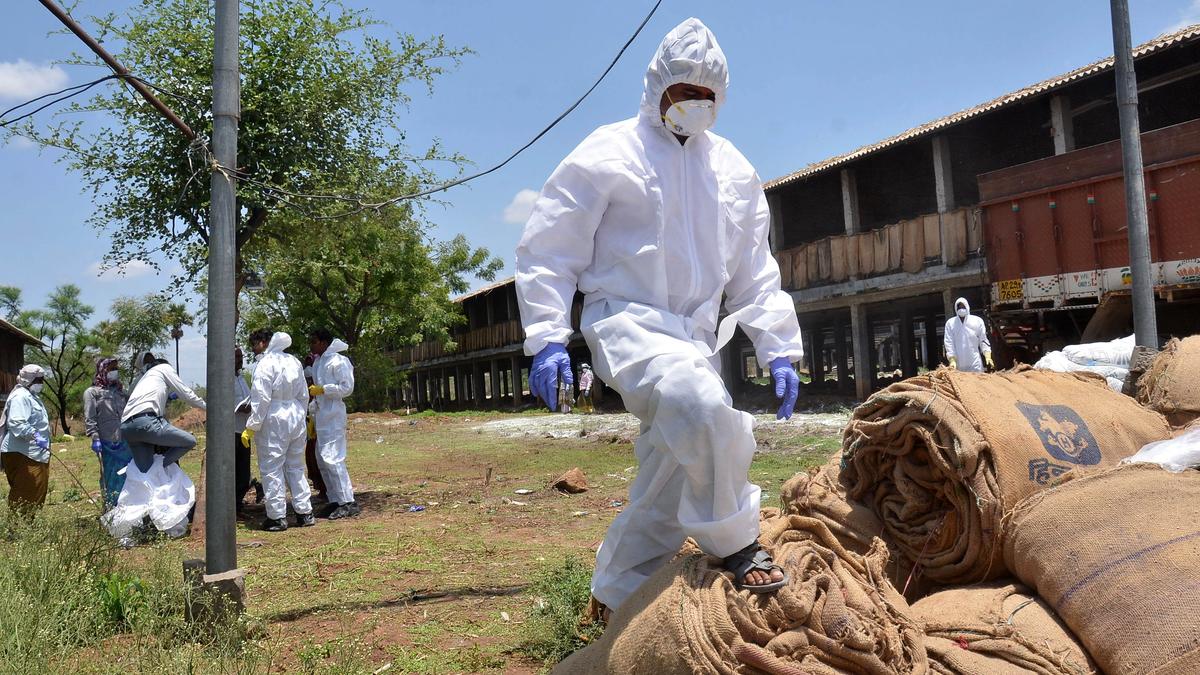
- 13 Nov 2024
In News:
- Cambodia saw a resurgence of H5N1 avian influenza cases after over 10 years of no human infections.
- From February 2023 to August 2024, 16 human cases were reported, with 3 deaths caused by the A/H5 clade 2.3.2.1c virus.
- Notably, 14 of these cases were caused by a novel reassortant virus, involving a mixture of clade 2.3.2.1c and clade 2.3.4.4b gene segments.
Key Points:
- Reassortment of the Virus:
- The reassortment between clades 2.3.2.1c (Southeast Asia) and 2.3.4.4b (global spread) has created a new strain.
- This reassortant virus is responsible for the second wave of infections in humans, starting in October 2023.
- Zoonotic Transmission:
- Investigations confirmed that direct contact with sick poultry or bird droppings was the primary source of human infections.
- There have been no reported cases of human-to-human transmission.
- The novel reassortant virus appears to have replaced the 2.3.2.1c strain in Cambodian poultry.
- Geographic Spread and Spillovers:
- Clade 2.3.2.1c was first reported in Cambodian poultry in March 2014. It continued to circulate in both poultry and wild birds.
- Clade 2.3.4.4b viruses began circulating in Cambodian live bird markets by 2021, co-existing with clade 2.3.2.1c.
- There were two key spillovers to humans:
- The first spillover in February 2023, associated with clade 2.3.2.1c, involved two related individuals, with one death.
- The second spillover, beginning in October 2023, involved the novel reassortant virus.
- Genetic Analysis and Mutation Concerns:
- Genetic sequencing showed significant changes in the hemagglutinin (HA) gene of viruses from human cases, indicating a shift from older local strains to newer sublineages.
- The PB2 627K mutation in the novel reassortant is concerning, as it is linked to increased mammalian adaptation and the potential for airborne transmission, particularly in mammals like ferrets.
- This mutation raises concerns about the virus’s ability to adapt to humans or other mammals.
- Environmental and Epidemiological Factors:
- The reassortment is believed to have been facilitated by:
- High-density poultry farming.
- Wild bird migration.
- Cross-border poultry trade in Southeast Asia.
- These factors heighten the risk of zoonotic transmission, emphasizing the need for continued vigilance in the region.
- The reassortment is believed to have been facilitated by:
- Surveillance and Response:
- One Health investigations linked human cases to infected poultry, highlighting the importance of rapid response through whole genome sequencing.
- The ongoing surveillance is critical, as the novel reassortant strain has already replaced clade 2.3.2.1c in Cambodian poultry.
- Public Health Recommendations:
- There is an urgent need to strengthen sustained surveillance of avian influenza in both poultry and wild birds, particularly in Southeast Asia.
- Public health strategies should focus on:
- Reducing human exposure to infected poultry.
- Promoting safe poultry handling practices.
- Encouraging early healthcare-seeking behavior in individuals with potential symptoms.
Doddalathur Megalithic Burial Site
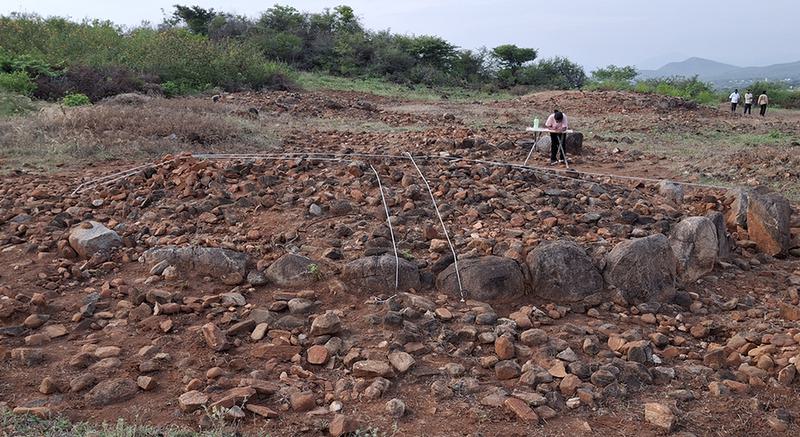
- 07 Oct 2024
In News:
A team of history and archaeology scholars and students from the University of Mysore have embarked on an excavation of megalithic burial sites in Chamarajanagar district.
- Location: Doddalathur village, Hanur taluk, Chamarajanagar district, situated in a valley by the Male Mahadeshwara Hill ranges.
- Team: A group of history and archaeology scholars and students from the University of Mysore, in collaboration with the Mythic Society, Bengaluru.
- Excavation Focus: Exploration of megalithic burial sites corresponding to the Iron Age (approximately 1200 BC to 300 CE).
- Site Features:
- Burials consist of circles made of large boulders, referred to as "megalithic."
- A small hillock is located to the west of the village.
- Historical Significance:
- The site was discovered by C. Krishnamurti of the Archaeological Survey of India in 1961.
- Originally contained over 1,000 burials, many of which have been lost due to agricultural expansion and development.
- Despite disturbances, many burials remain intact and are considered suitable for excavation.
- Goals of the Project:
- To enhance understanding of megalithic-Iron Age culture in southern Karnataka's hilly regions.
- To provide practical field training for archaeology students.
India-Middle East-Europe Economic Corridor (IMEC)
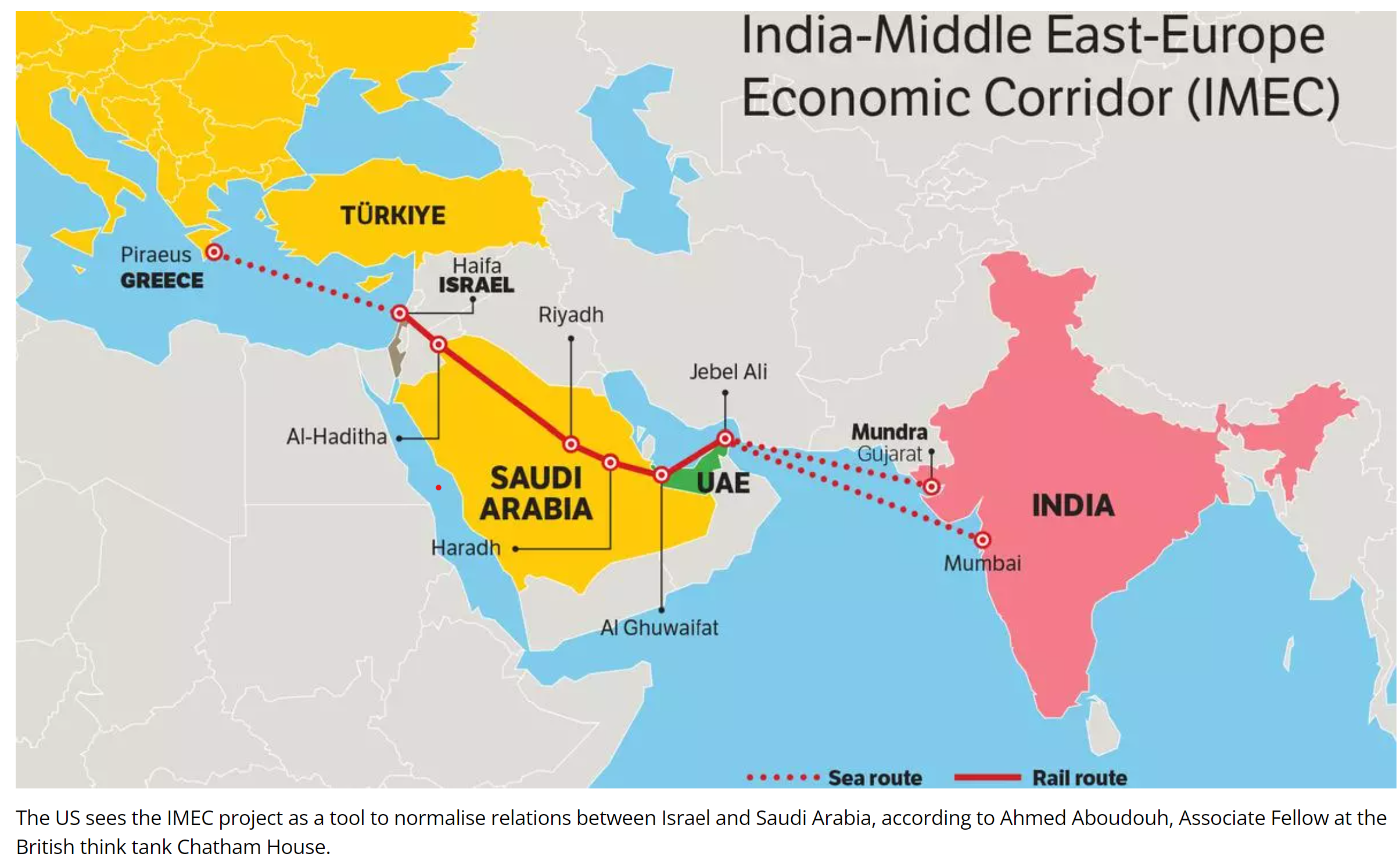
- 07 Sep 2024
In News:
IMEC is an important initiative that can add to India's maritime security and faster movement of goods between Europe and Asia, said Union Minister of Commerce & Industry at the Confederation of Indian Industry (CII) India-Mediterranean Business Conclave 2024 in New Delhi.
Key Details:
- Corridors:
- East Corridor: Connects India to the Gulf.
- Northern Corridor: Links the Gulf to Europe.
- Components:
- Railroad: Provides a reliable and cost-effective cross-border ship-to-rail transit network.
- Ship-to-Rail Networks: Integrates road, sea, and rail transport routes.
- Road Transport: Complements the overall transport infrastructure.
- Expected Benefits:
- Increased Efficiency: Enhances transit efficiency and reduces costs.
- Economic Unity: Promotes economic integration and job creation.
- Environmental Impact: Lowers greenhouse gas emissions.
- Transformative Integration: Connects Asia, Europe, and the Middle East.
- Additional Features:
- Infrastructure: Includes laying cables for electricity and digital connectivity, and pipes for clean hydrogen export.
- Implementation:
- MoU Commitments: Participants will collaboratively address technical design, financing, legal, and regulatory aspects.
- Action Plan: A meeting is planned within 60 days to develop an action plan with specific timetables.
Geoeconomic Perspective
- Economic Integration and Interdependence:
- Prosperity Through Integration: IMEC aims to foster trade and investment among India, the Middle East, and Europe, potentially leading to mutual prosperity and regional stability.
- Building Bridges: Aligns with the liberal international order by promoting economic interdependence to reduce tensions and create shared interests.
- Support from Major Powers: Backed by the US, Europe, and India, signaling a strong commitment to economic ties and regional stability.
- Economic Potential:
- Infrastructure and Trade Routes: Enhances infrastructure and trade routes, boosting economic activity, trade volumes, and investment opportunities.
- Regional Development: Promotes job creation and development in economically disadvantaged areas along the corridor.
Geopolitical Perspective
- Strategic Rivalry with China:
- Countering the BRI: IMEC is seen as a strategic counterbalance to China's Belt and Road Initiative (BRI), offering an alternative aligned with US, European, and Indian interests.
- Regional Influence: Aims to limit China’s influence in the Middle East and South Asia by establishing a competing corridor.
- Geopolitical Alliances:
- Aligning Interests: Involves strategic partnerships among the US, Europe, and India, reflecting concerns about China’s global strategy and shifting power dynamics.
- Rivalry and Competition: The IMEC could be viewed as a global positioning move, responding to China’s growing influence and securing strategic interests.
Reasons for Joining the IMEC
- Economic Enhancement:
- Boosts Indo-Gulf Relations: Enhances trade and economic ties with the Arab Gulf, addressing infrastructure gaps.
- Regional Connectivity: Links India with key partners like Israel and Jordan, boosting economic opportunities.
- Strategic Trade Routes:
- Alternative Routes: Complements existing routes like Chabahar Port and INSTC, connecting India to southern Eurasia.
- Bypassing Choke Points: Offers a shorter route to Eastern Mediterranean and Western Europe, avoiding strategic choke points.
- Energy and Trade Opportunities:
- Access to Resources: Provides potential access to Eastern Mediterranean gas fields.
- Trade Bloc Connectivity: Links India with the EU and GCC, opening up growth opportunities.
- Geopolitical Aspirations:
- Global Power Ambitions: Supports India’s goal to enhance global influence and integrate with eastern and western neighbors.
- Economic Growth: Leverages economic integration to support development and influence.
- Infrastructure Development:
- Economic Integration: Facilitates infrastructure creation for increased trade volumes and regional stability.
Added Sugars/Free Sugars

- 19 Apr 2024
Why is it in the News?
Nestlé’s products for babies in Asia, Africa, and Latin America were found to contain added sugars, while the same products sold in Europe did not have it, according to a recent report.
Highlights of the Report on Nestle:
- A report by the Swiss organization Public Eye titled 'How Nestlé gets children hooked on sugar in lower-income countries' scrutinized Nestlé for employing varying nutritional standards across its products depending on the country, with unclear sugar content labeling.
- The report highlighted Nestlé's Cerelac, the world's largest baby cereal brand, which contains significantly higher sugar levels in markets like India, Ethiopia, and Thailand compared to Germany and the UK.
- Despite sugar not being recommended for infants, Nestlé's baby food products with added sugars are allowed under some countries' national legislation, conflicting with WHO guidelines.
- WHO recommends reducing daily free sugar intake to less than 10% of total energy intake, preferably less than 5% (around 25 grams per person per day), for better health.
- Nestlé India claims to have reduced added sugars by up to 30% in their infant cereals portfolio over the last five years, depending on the variant.
What are Added Sugars?
- Sugar is a simple carbohydrate.
- Some food items have sugar that is naturally occurring.
- It is “found in milk (lactose) and fruit (fructose) or any product that contains milk (such as yogurt, milk, or cream) or fruit (fresh, dried) contains some natural sugars.
- Free sugar or added sugar is added separately to a food item during preparation or processing.
- It can “include natural sugars such as white sugar, brown sugar, and honey, as well as other caloric sweeteners that are chemically manufactured (such as high fructose corn syrup).
Why is Added Sugar Bad?
- Excessive consumption of added sugars poses several health risks.
- Limiting sugar intake is essential for maintaining a healthy diet and preventing various diseases.
The following are some reasons why added sugars can be harmful:
- Poor Nutritional Balance: Consuming too much-added sugar can lead to increased overall energy intake, often replacing nutritionally adequate calories from healthier food sources.
- This results in an unbalanced diet lacking essential nutrients, increasing the risk of malnutrition and other health problems.
- Increased Risk of Non-Communicable Diseases: Excessive sugar consumption is associated with a higher risk of developing non-communicable diseases such as diabetes, obesity, and cardiovascular ailments.
- These diseases can have severe long-term consequences on overall health and well-being.
- Unnecessary for Infants and Children: Adding sugar to foods offered to babies and young children is unnecessary and can be highly addictive, establishing unhealthy eating habits that continue into adulthood.
- Early exposure to sugar is also associated with tooth decay and can contribute to nutrition-based disorders later in life.
Gujarat Freedom of Religion Act
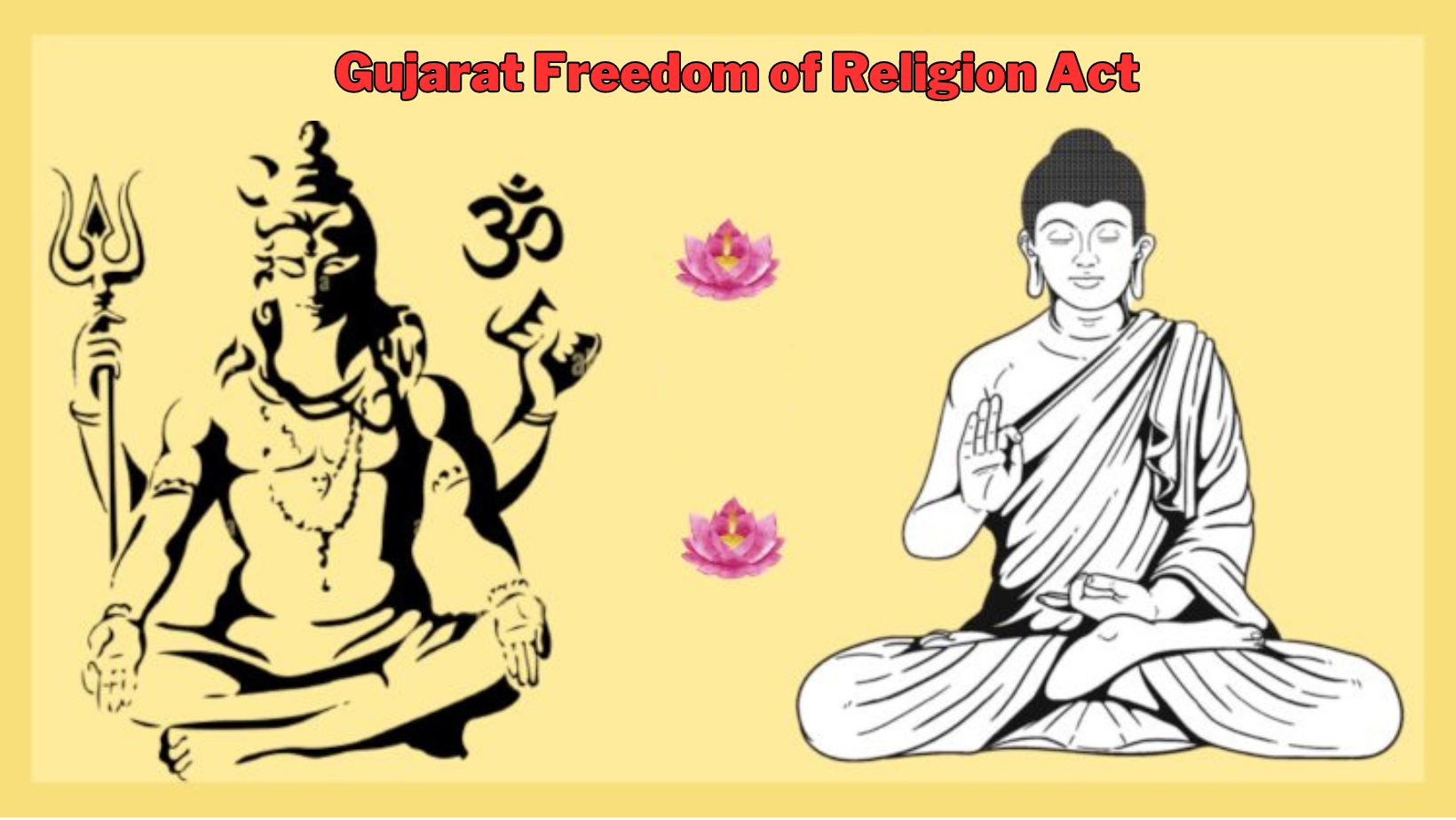
- 13 Apr 2024
Why is it in the News?
The Gujarat government recently clarified that Buddhism and Hinduism must be considered as two separate religions for religious conversions in the state.
Why did the Gujarat Government Issue the Circular?
- The Gujarat government issued the circular to address an issue regarding the application process for converting from Hinduism to Buddhism.
- The circular, issued by the Home Department highlights that the proper procedures outlined in the Gujarat Freedom of Religion Act (GFR Act) are not being followed.
- The circular points out that some offices are rejecting these conversion applications, arguing that under Article 25(2) of the Constitution, Sikhism, Jainism, and Buddhism are considered part of Hinduism.
- Therefore, applicants are told they don't need permission for religious conversion.
- This interpretation refers to Article 25, which guarantees religious freedom.
- Article 25(2)(b) allows laws for social welfare or reform for Hindus, which includes Sikhs, Jains, and Buddhists.
- Notably, the circular contrasts with a proposed 2006 amendment to the GFR Act, which suggested considering Jainism and Buddhism as part of Hinduism.
- However, the circular clarifies that, according to the GFR Act, Buddhism must be seen as a separate religion.
How does the GFR Act Govern Religious Conversions in Gujarat?
- The Gujarat Freedom of Religion Act (GFR Act) controls how people change their religion in Gujarat.
- According to the state government, this law aims to stop religious conversion by offering rewards, using force, lying, or tricking people.
- One part of the law, Section 3, makes it a crime to force or persuade someone to change their religion, whether by using force, offering rewards, trickery, or arranging marriages.
- Another part, Section 3A, added in 2021, lets anyone who feels harmed or their relatives report these crimes to the police.
- People who break Section 3 can be sent to jail for up to three years and fined up to Rs 50,000.
- If the person affected is a woman, a child, or from certain communities, the punishment is harsher – up to four years in jail and a fine of Rs 1 lakh.
- For a religious conversion to be legal, Section 5 says the person leading the ceremony must get permission from the District Magistrate beforehand.
- And the person who changes their religion must tell the District Magistrate afterward.
- Not doing this can result in a one-year jail term or a fine of up to Rs 1,000.
- In 2021, the GFR Act was changed to include more rules.
- It now makes it a crime to change religion through marriage (Section 4A) and says marriages are void if one person converts before or after getting married (Section 4B).
- It also punishes people involved in organizations that unlawfully convert others (Section 4C). The accused now have to prove that the conversion was legal (Section 6A).
Rakhigarhi
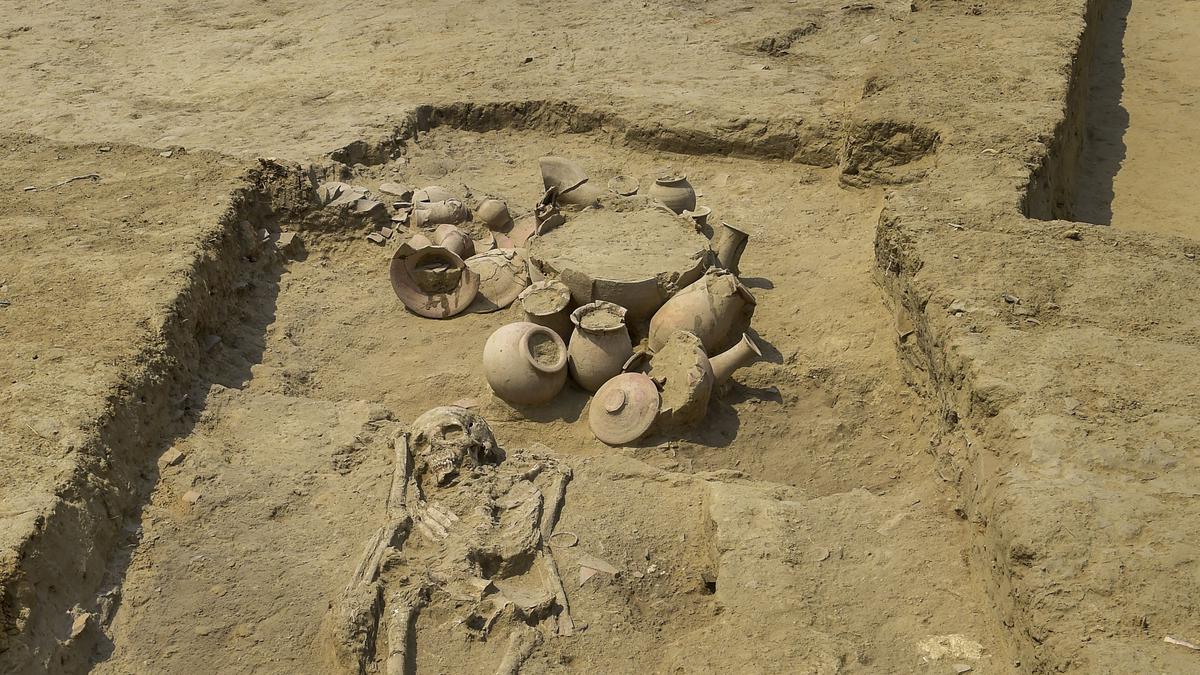
- 06 Apr 2024
Why is it in the News?
The NCERT has proposed updates to school textbooks, including adding findings from DNA analysis of skeletal remains at the Rakhigarhi archaeological site in Haryana and removing references to the Narmada Dam project's impact on tribals, leading to displacement and destitution.
About the Ancient Site of Rakhigarhi:
- The site of Rakhigarhi is one of the five known biggest townships of the Harappan civilization on the Indian subcontinent.
- The other four are:
- Harappa
- Mohenjodaro and Ganveriwala in Pakistan and
- Dholavira (Gujrat) in India
- Five interconnected mounds spread over a huge area from the Rakhigarhi's unique site.
- Two mounds, out of five, were thickly populated.
- This site was excavated by Shri Amarendra Nath of Archeological Survey of India.
- The archaeological excavations revealed a mature Harappan phase represented by a planned township having mud-brick as well as burnt-brick houses with proper drainage systems.
- The ceramic industry is represented by redware, which includes dish-on-stands, vases, jars, bowls, beakers, perforated jars, goblets, and hands.
- Animal sacrificial pits lined with mud brick and triangular and circular fire alters on the mud floor have also been excavated signifying the ritual system of Harappans.
- A cylindrical seal with five Harappan characters on one side and a symbol of an alligator on the other is an important find from this site.
- Other antiquities included blades; terracotta and shell bangles; beads of semiprecious stones, terracotta, shell, and copper objects; animal figurines, toy cart frame and wheel of terracotta; bone points; inscribed steatite seals and sealings.
- The excavations have yielded a few extended burials, which certainly belong to a very late stage, maybe the medieval times.
About Harappan Civilization:
- The Harappan civilization is believed to be one of the oldest world civilizations together with Egypt and Mesopotamia.
- It flourished around 2,500 BC, in the western part of South Asia, in contemporary Pakistan and Western India.
- The Harappan civilization developed along the mighty river, the Indus, and for that reason, it is also known as the Indus Valley Civilization.
- The Harappan civilization is identified as a Bronze-age civilization because many objects have been found that are made up of copper-based alloys.
- For example, the famous ‘dancing girl,’ a bronze figurine that provides an insight into the advances made in art and metallurgy, as well as the hairstyle and ornaments prevalent during the period.
- In the 1920s, the Archaeological Department of India carried out excavations in the Indus Valley wherein the ruins of the two old cities, viz. Mohenjodaro and Harappa were unearthed.
Sannati: Ancient Buddhist Site
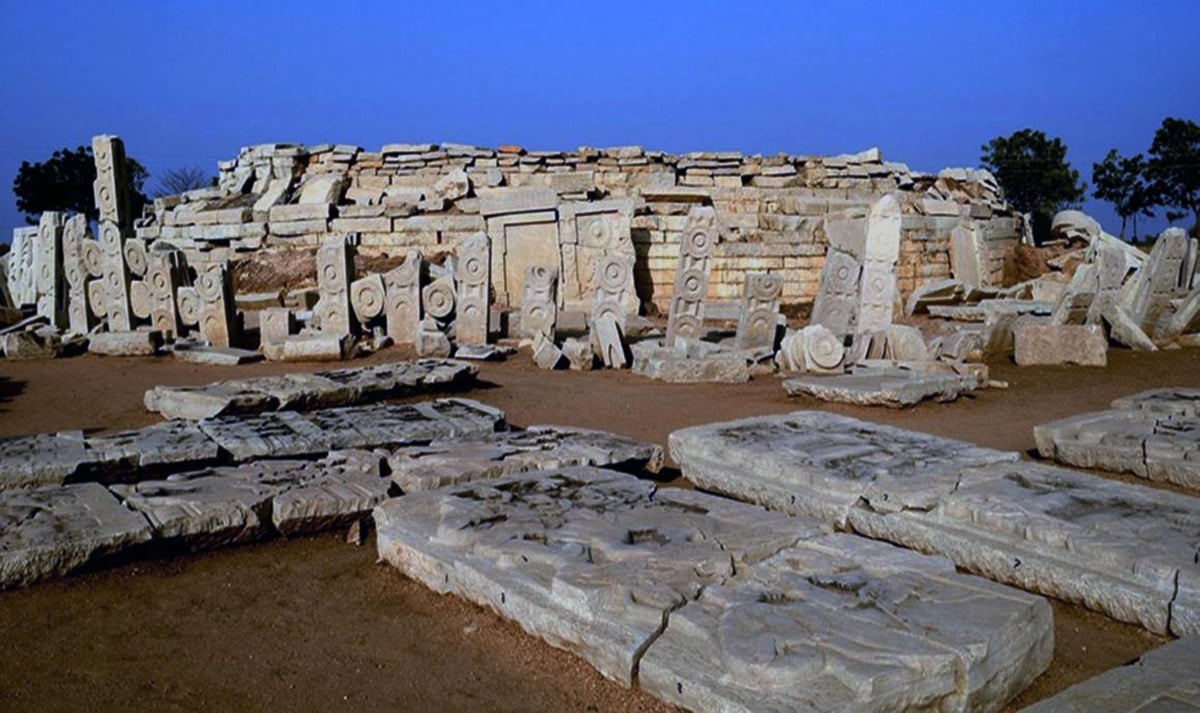
- 05 Apr 2024
Why is it in the News?
Left neglected for many years after it came to light through the ASI excavations in the 1990s, the ancient Buddhist site of Sannati on the bank of the Bhima River got a restoration project in 2022.
About Ancient Sannati Buddhist site:
- This ancient Sannati Buddhist site, situated alongside the Bhima River near Kanaganahalli in Karnataka's Kalaburagi district, offers a rich historical and cultural experience.
- Notably, it also boasts the Chandrala Parameshwari Temple, a popular attraction among tourists.
Key discoveries at this site include evidence of development across three distinct phases:
- Maurya, Early Satavahana, and Later Satavahana periods, span from the 3rd Century B.C. to the 3rd Century A.D.
- The Ranamandala area of Sannati presents a unique chronological timeline from prehistoric to early historic eras.
- Among the remarkable findings is an inscription in the Prakrit language, inscribed using Brahmi script.
- Noteworthy is the recovery of a significant stone sculpture portraying Mauryan Emperor Ashoka, surrounded by his queens and attendants, with the inscription "Raya Asoko" in Brahmi script, leaving no doubt about the identity of the depicted figure.
- The excavation also yielded around 60 dome slabs featuring sculptural depictions of Jataka stories, significant events in the life of Buddha, portraits of Shatavahana monarchs, and unique representations of Buddhist missionaries dispatched by Ashoka to various regions.
- Moreover, the ancient Nagavi Ghatikasthana, often dubbed as the Takshashila of the South, lies approximately 40 km from Sannati.
- Functioning as a prominent educational center akin to a modern-day university during the Rashtrakuta and Kalyana Chalukya dynasties from the 10th to 12th Centuries, it held great historical significance.
After 30 years, Buddha relics travel to Thailand
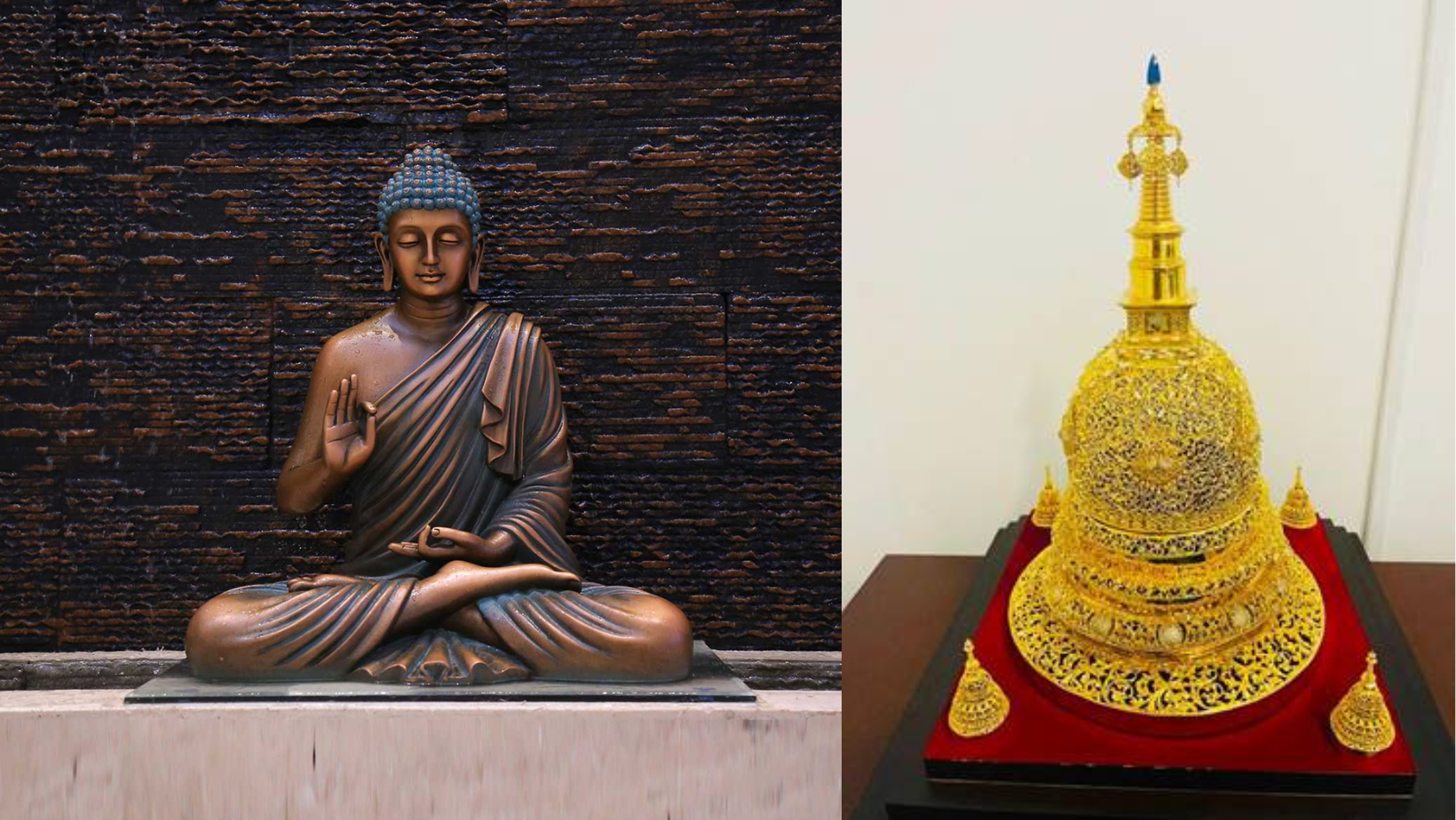
- 21 Feb 2024
Why is it in the News?
Four of the 20 relics of Lord Buddha preserved at the National Museum are being taken to Thailand for a month-long exposition beginning recently, in a rare trip abroad for the delicate antiquities recovered more than a century ago.
About the Relics of Lord Buddha:
- The relics of Lord Buddha and his disciples Arahata Sariputra and Arahata Maudgalayana are known as the ‘Kapilvastu Relics.’
- The relics date back to around the 4th or 5th Century BC.
- They were found in Bihar’s Piprahwa — a site that is believed to be the ancient city of Kapilvastu.
- Piprahwa today is located in Uttar Pradesh’s Siddharthnagar district.
- The relics were discovered by a team of Archaeological Survey of India (ASI) officials in the 1970s.
- The ASI conducted excavations at Piprahwa from 1971-77 under the supervision of the archaeology director KM Srivastava.
History:
- Lord Buddha achieved Mahaparinirvana at the age of 80 in Kushinagar.
- The Mallas of Kushinagara cremated his body with ceremonies befitting a ‘Universal King’ (‘cakravartin’).
- His holy relics, from the funeral pyre, were collected, divided and given by Brahmin priest Dhona of Kushinagar to kings and priests.
- The eight shares were distributed among Ajatashatru of Magadha, the Licchavis of Vaishali, the Sakyas of Kapilavastu, Mallas of Kushinagar, Bullies of Allakappa, the Mallas of Pava, the Koliyas of Ramagrama and a Brahmana of Vethadipa.
- The sacred relics were commemorated in eight different stupas.
- Two more stupas came into existence, one over the urn in which the relics had been collected and one over the embers.
- Thus, stupas erected over the bodily relics of Buddha (Saririka-stupas) are the earliest surviving Buddhist shrines.
- It is stated that Ashoka (circa 272-232 BC), being an ardent follower of Buddhism, opened up seven of these eight stupas, and collected a major portion of the relics for enshrinement within innumerable stupas built by him to popularise Buddhism and spread dharma.
- In 1898, the discovery of an inscribed casket by William Claxton Peppé, a British colonial engineer and an estate manager at a Buddhist stupa site at Piprahwa, was an epoch-making incident.
- The inscription on the lid referred to the relics of Buddha and his community.
- The bone relics present in the stone coffer were presented to King Rama V of Thailand.
- The relics were further divided into three shares and gifted to Thailand, Myanmar and Sri Lanka.
- In Thailand, the holy relic has been enshrined in a chedi on the top of Suwanbanphot, Bangkok.
- Every year, during the Loi Krathong Festival, there is a seven-day and seven-night celebration, which has become a tradition to worship the Buddha’s relics.
The Global Pulses Conference (The Hindu)
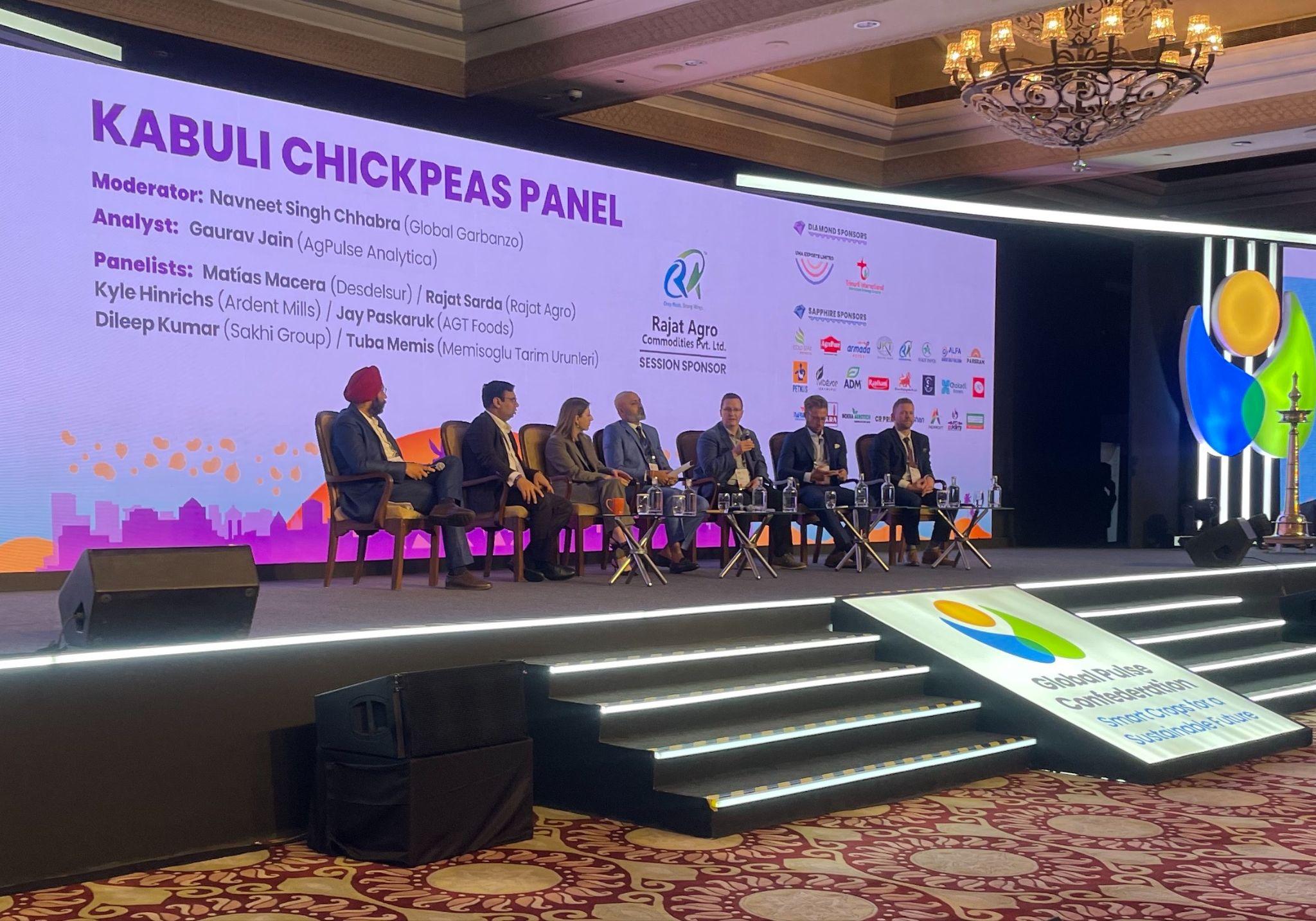
- 16 Feb 2024
Why is it in the News?
The Global Pulses Conference, an annual meeting of pulses producers, processors and traders, suggested that India augment the production of pulses to meet the nutritional requirements.
About the Global Pulses Confederation (GPC):
- The Global Pulses Confederation (GPC) serves as a global representative body for the pulse industry.
- Stakeholders: It encompasses various stakeholders within the pulse industry, such as growers, researchers, traders, government entities, processors, and consumers.
- Headquarters: The GPC is based in Dubai and operates under the licensing of the Dubai Multi Commodity Centre (DMCC).
- The Global Pulses Conference, held annually, took place in New Delhi this year.
Key Observations from the Conference:
- Self-Sufficiency Target: India aims to achieve self-sufficiency in pulses production by 2027, having already attained this status in chickpeas and various other pulse crops, with minor gaps remaining in pigeon peas and black gram.
- Decadal Growth: Pulse production has witnessed a significant 60% growth, increasing from 171 lakh tonnes in 2014 to 270 lakh tonnes in 2024.
- Minimum Support Price (MSP): The government has guaranteed farmers a minimum support price set at 50% above the actual cost of production, ensuring lucrative returns on investment.
- Current MSP rates reflect remarkable increases, such as 117% in masoor, 90% in moong, and substantial hikes in chana dal, toor, and urad compared to a decade ago.
- Government Initiatives: Efforts include the introduction of new seed varieties and the expansion of tur and black gram cultivation to bolster production.
- Importance of Pulse Crops: Pulse cultivation not only enriches soil health but also provides nutritional benefits, particularly for smallholding farmers.
- Improved cultivation practices promise widespread benefits for all stakeholders involved.
Status of Pulse Production in India:
- Production Trends: Over the past decade, pulse production in India has surged by 60%, escalating from 171 lakh tonnes in 2014 to 270 lakh tonnes in 2024.
- Global Standing: India boasts the distinction of being the world's largest producer, consumer, and importer of pulses. It contributes 25% to global production, consumes 27% of the world's total, and imports 14%.
- Agricultural Landscape: Pulses occupy approximately 20% of the foodgrain area in India and contribute 7-10% to the nation's total foodgrain production.
- Cultivation Seasons: While pulses are cultivated in both Kharif and Rabi seasons, Rabi pulses account for over 60% of the total production.
- Variety Distribution: Among pulse varieties, Gram leads the production, comprising roughly 40% of the total output, followed by Tur/Arhar at 15-20%, and Urad/Black Matpe and Moong each contributing approximately 8-10%.
- Self-Sufficiency: India has achieved self-sufficiency in chickpeas (chana) and various other pulse crops, with minor shortfalls, observed only in pigeon peas (tur) and black gram.
PM Modi addresses World Government Summit 2024 in Dubai (MEA)
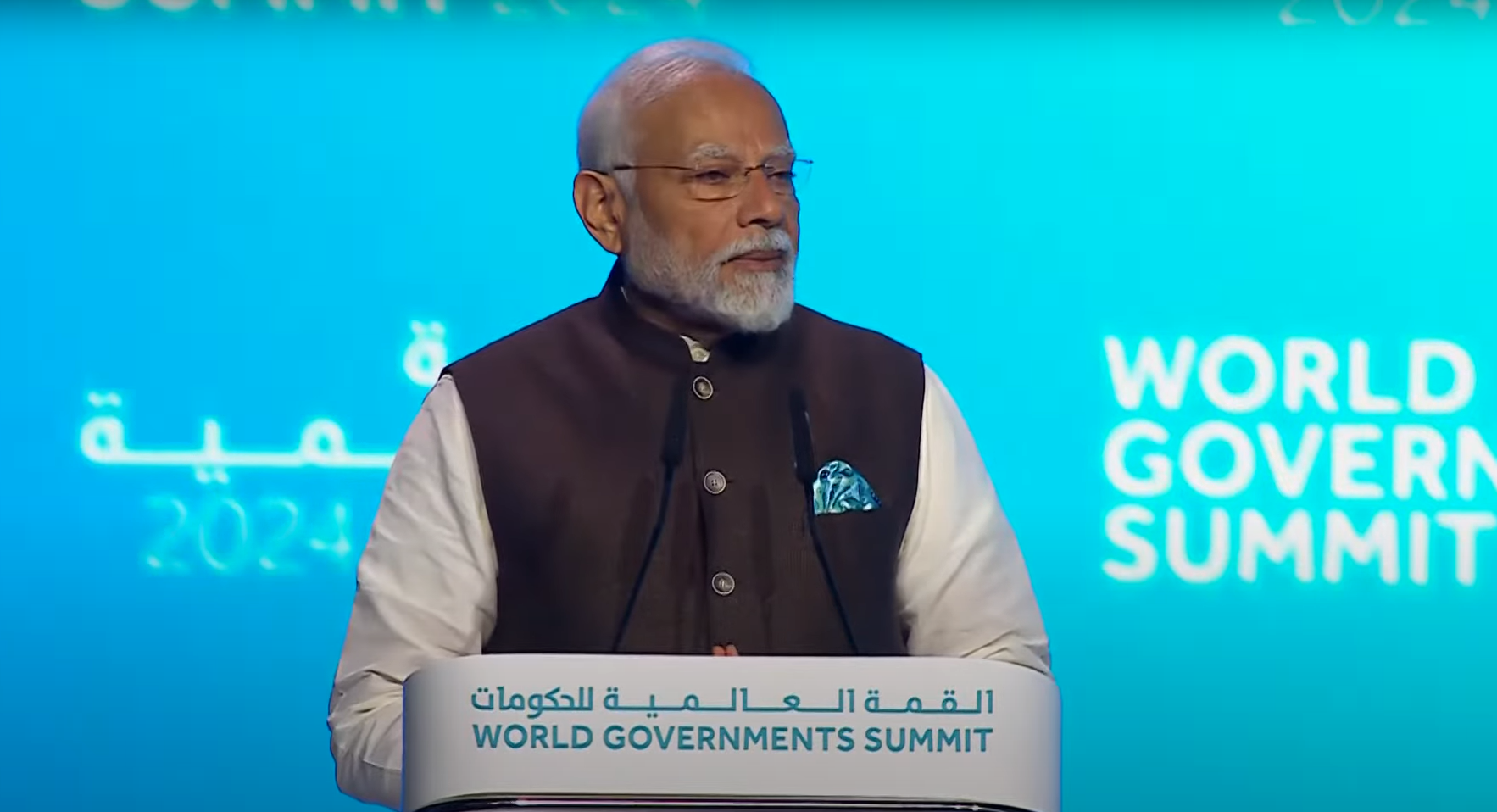
- 15 Feb 2024
Why is it in the News?
Prime Minister Modi attended the World Government Summit 2024 as guest of honour in Dubai recently.
What is the World Governments Summit?
- The World Governance Summit serves as a worldwide platform committed to shaping the trajectory of government initiatives across the globe.
- This annual gathering takes place in Dubai, United Arab Emirates, convening leaders and experts from various sectors.
- Each year, the Summit sets the agenda for the forthcoming era of governance, emphasising the utilisation of innovation and technology to address pressing global challenges.
- Since its establishment in 2013, the Summit has been steadfast in its mission to influence the evolution of governmental practices and foster a brighter future for humanity.
World Governance Summit Organization:
- The World Governance Summit Organization operates as an impartial, nonprofit entity with a global reach, dedicated to influencing the future landscape of governance.
- Headquartered in Dubai, United Arab Emirates, the organisation serves as a nexus for collaboration and idea exchange among governmental and non-governmental stakeholders.
- 2024 Summit: Dubai, United Arab Emirates
- Theme - 'Shaping Future Governments'
Key Highlights of PM Modi's Speech:
- Streamlining Government Operations: The Prime Minister addressed the evolving landscape of governance, emphasising India's adoption of transformative reforms under the ethos of "Minimum Government, Maximum Governance.”
- Human-Centred Governance: Drawing from India's experience leveraging digital technology for welfare, inclusivity, and sustainability, he advocated for a human-centred approach to governance.
- He highlighted India's focus on people's participation, last-mile delivery, and women-led development to foster an inclusive society.
- Need for Global Collaboration: Given the interconnected nature of the world, the Prime Minister stressed the importance of governments collaborating and learning from each other to tackle future challenges effectively.
- Model of Governance: Highlighting the current imperative, the Prime Minister underscored the necessity for governance to be inclusive, technologically adept, transparent, and environmentally sustainable.
- He outlined priorities such as Ease of Living, Justice, Mobility, Innovation, and Business in public service delivery.
- India's Climate Change Commitment: Reaffirming India's unwavering commitment to climate change action, he urged people to join Mission LiFE (Lifestyle for Environment) to foster a sustainable world.
- Leadership Role of India: The Prime Minister elaborated on India's leadership role, particularly as the chair of G-20, highlighting efforts to address global challenges and elevate development concerns of the Global South.
- He advocated for reforming multilateral institutions to give greater voice to the Global South in decision-making processes.
- India as a Global Partner: Emphasising India's commitment to global progress, he reiterated India's role as a "Vishwa Bandhu" (friend of the world), pledging continued contributions to global advancement.
Greening India's Wastelands with Agroforestry (GROW) Report and Portal (DD News)
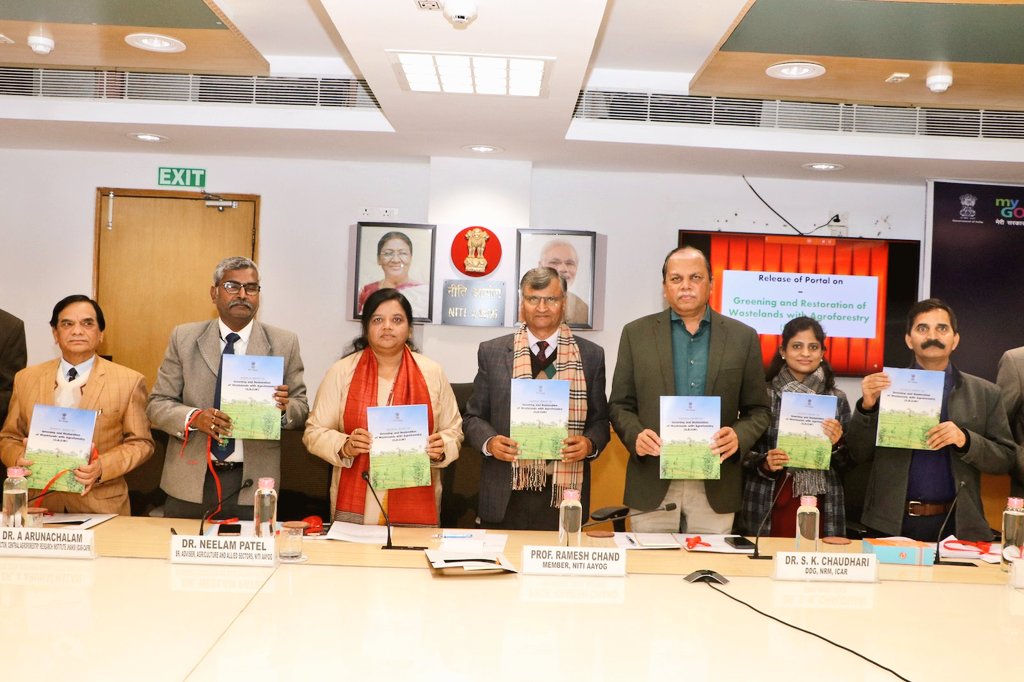
- 13 Feb 2024
Why is it in the News?
NITI Aayog recently unveiled the Greening and Restoration of Wasteland with Agroforestry (GROW) report and portal, aiming to bolster efforts in environmental conservation and sustainable land use across India.
About the Greening India's Wastelands with Agroforestry (GROW) Portal:
- The "Greening and Restoration of Wasteland with Agroforestry (GROW)-Suitability Mapping" portal offers universal access to state and district-level data.
- Hosted on the Bhuvan website, the GROW initiative aligns with national commitments to restore 26 million hectares of degraded land by 2030 and create an additional carbon sink of 2.5 to 3 billion tonnes of carbon dioxide equivalent.
- Led by NITI Aayog, the initiative involved collaboration from various institutions and utilized advanced technologies like remote sensing and GIS to assess agroforestry suitability across all Indian districts.
- Through thematic datasets, the project developed an Agroforestry Suitability Index (ASI) for national-level prioritization of greening and restoration projects.
- Based on analysis of five remote sensing-derived thematic layers - land use, wasteland, slope, water proximity, and soil organic content - the system provides information on areas suitable for agroforestry across India.
- It classifies areas as highly suitable, moderately suitable, and less suitable for agroforestry.
- Key features include generating district-level information on wasteland areas suitable for agroforestry, area prioritization regimes, live maps, area analysis-statistic reports, and an interactive mode/tool for flexibility in handling weights based on local conditions/needs.
Government Emphasis on Agroforestry in Budget Allocation:
- The Union Budget for the fiscal year 2022-23 has underscored the promotion of agroforestry and private forestry as a priority.
- Recognizing the critical goods and services provided by agroforestry, the budget aligns with the country's commitment to sustainable land use practices.
India's Agroforestry Leadership and Global Alignments:
- As the seventh-largest country globally, India faces challenges such as increased build-up areas, degraded land, and imbalanced resources.
- Approximately 16.96% of the Total Geographical Area (TGA) is a wasteland, necessitating transformation for productive use.
- India's pioneering National Agroforestry Policy, initiated in 2014, aims to enhance productivity, profitability, and sustainability through agroecological land use systems.
- Agroforestry aligns with global commitments, including the Paris Agreement, Bonn Challenge, UN Sustainable Development Goals, United Nations Convention on Combating Desertification (UNCCD), Doubling Farmers Income, Green India Mission, and more.
- India's proactive stance in promoting agroforestry contributes significantly to these international efforts, fostering a sustainable and resilient future.
5 Wetlands Added to The Global List of Wetlands of International Importance under Ramsar Convention (TOI)
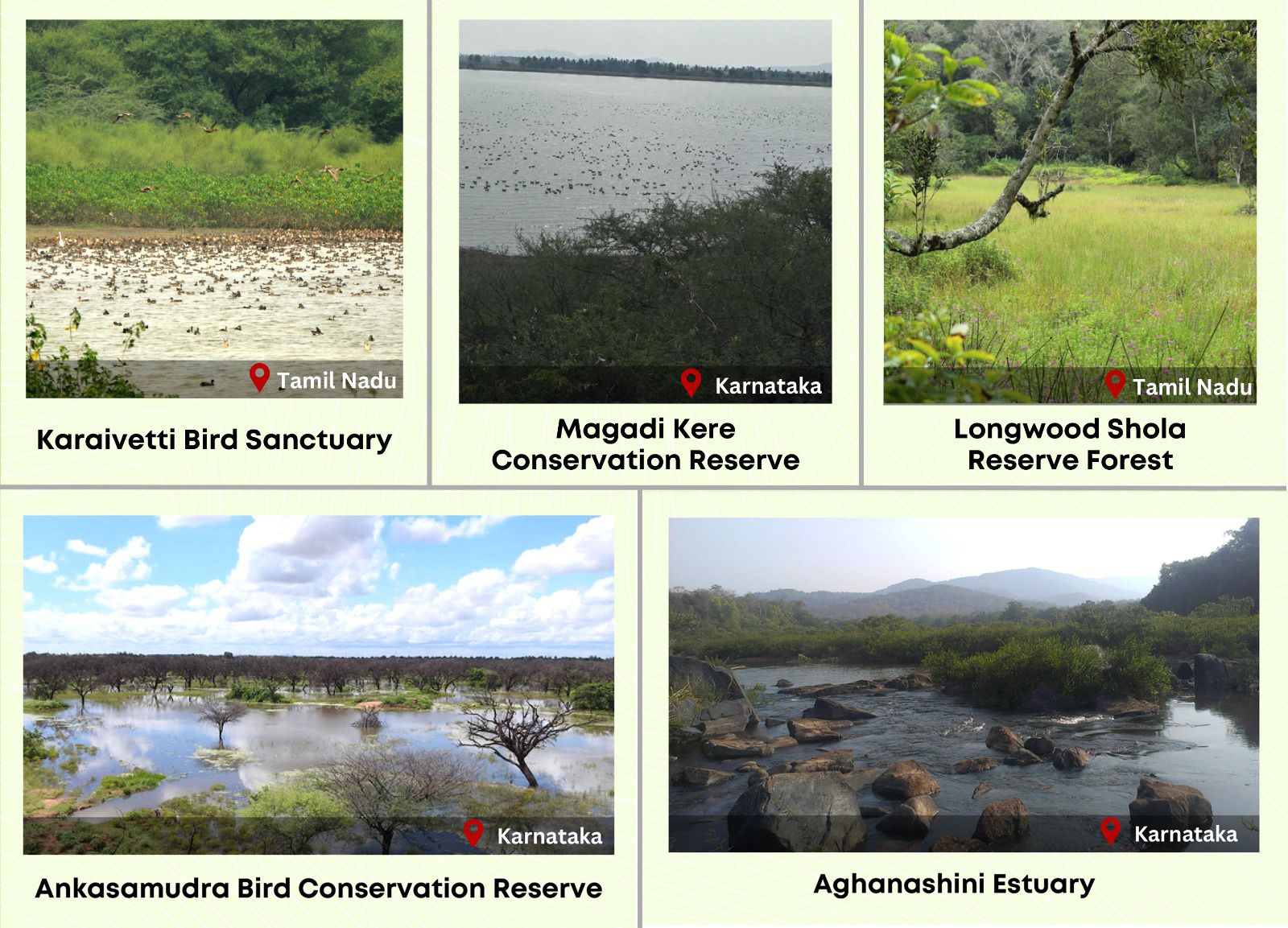
- 01 Feb 2024
Why is it in the News?
Ahead of World Wetlands Day, five more wetlands in India got the tag of international importance under the Ramsar Convention, making it the fourth largest country in terms of the number of sites on the list.
About the New Ramsar sites:
- The five newly added Indian sites in the list are Karaivetti Bird Sanctuary and Longwood Shola Reserve Forest in Tamil Nadu, and Magadi Kere Conservation Reserve, Ankasamudra Bird Conservation Reserve and Aghanashini Estuary in Karnataka.
- In India, Tamil Nadu continues to have the maximum number of Ramsar sites (16) followed by Uttar Pradesh (10).
- Karaivetti Bird Sanctuary (Tamil Nadu): Karaivetti Bird Sanctuary is one of the largest inland wetlands of Tamil Nadu and is a significant source of groundwater recharge for the area.
- Water from the wetland is utilized by the villagers for cultivating crops such as paddy, sugar cane, cotton, corn, and split red gram.
- Karaivetti has one of the largest congregations of waterbirds in the State of Tamil Nadu.
- The Longwood Shola Reserve Forest (Tamil Nadu): The Longwood Shola Reserve Forest derives its name from the Tamil word, "Solai", which means ‘tropical rainforest’.
- The ‘Sholas’ are found in the upper reaches of the Nilgiris, Anamalais, Palni hills, Kalakadu, Mundanthurai and Kanyakumari in Tamil Nadu.
- These forested wetlands serve as habitats for the globally endangered Black-chinned Nilgiri Laughing thrush (Strophocincla cachinnans), Nilgiri Blue Robin (Myiomela major), and vulnerable Nilgiri Wood-pigeon (Columba elphinstonii).
- As many as 14 out of 26 endemic bird species of the Western Ghats are found in these wetlands.
- Ankasamudra Bird Conservation Reserve (Karnataka): Ankasamudra Bird Conservation Reserve is a human made Village Irrigation Tank built centuries back and is spread over an area of 98.76ha.
- It is an ecologically important wetland, rich in biodiversity, comprising over 210 species of plants, mammal species, reptiles, birds etc.
- It supports more than 1% of the biogeographic population of Painted Stork and Black-headed Ibis.
- Aghanashini Estuary (Karnataka): Aghanashini Estuary is formed at the confluence of the Aghanashini River with the Arabian Sea.
- The brackish water of the Estuary provides diverse ecosystem services including flood and erosion risk mitigation, biodiversity conservation and livelihood support.
- The wetland also provides livelihoods to families by supporting fishing, agriculture, collection of edible bivalves and crabs, shrimp aquaculture, traditional fish farming in the estuarine rice fields (locally known as Gazni rice fields), bivalve shell collection and salt production.
- Magadi Kere Conservation Reserve (??Karnataka): Magadi Kere Conservation Reserve, is a human-made wetland with an area of nearly 50 hectares which was constructed to store rainwater for irrigation purposes.
- The wetland harbors two vulnerable species, namely the Common pochard and River tern and four near-threatened species, namely the Oriental Darter Black-headed Ibis Woolly-necked Stork and Painted Stork.
- It is also one of the largest wintering grounds for the Bar-headed goose (Anser indicus) in Southern India.
- The wetland is a designated Important Bird Area (IBA) and is also listed as a priority area for conservation in India.
What is the Ramsar Convention?
- The Ramsar Convention was signed on 2nd February 1971 to preserve the ecological character of their wetlands of international importance.
- It is named after Ramsar, the Iranian city where the treaty was signed in 1971, and places chosen for conservation under it are given the tag ‘Ramsar site’.
- The World Wetlands Day, celebrated on 2 February to raise global awareness about the importance of wetlands for human prosperity and a healthy planet.
‘Global Good Alliance for Gender Equity and Equality’ launched at Davos with support from India (DD)
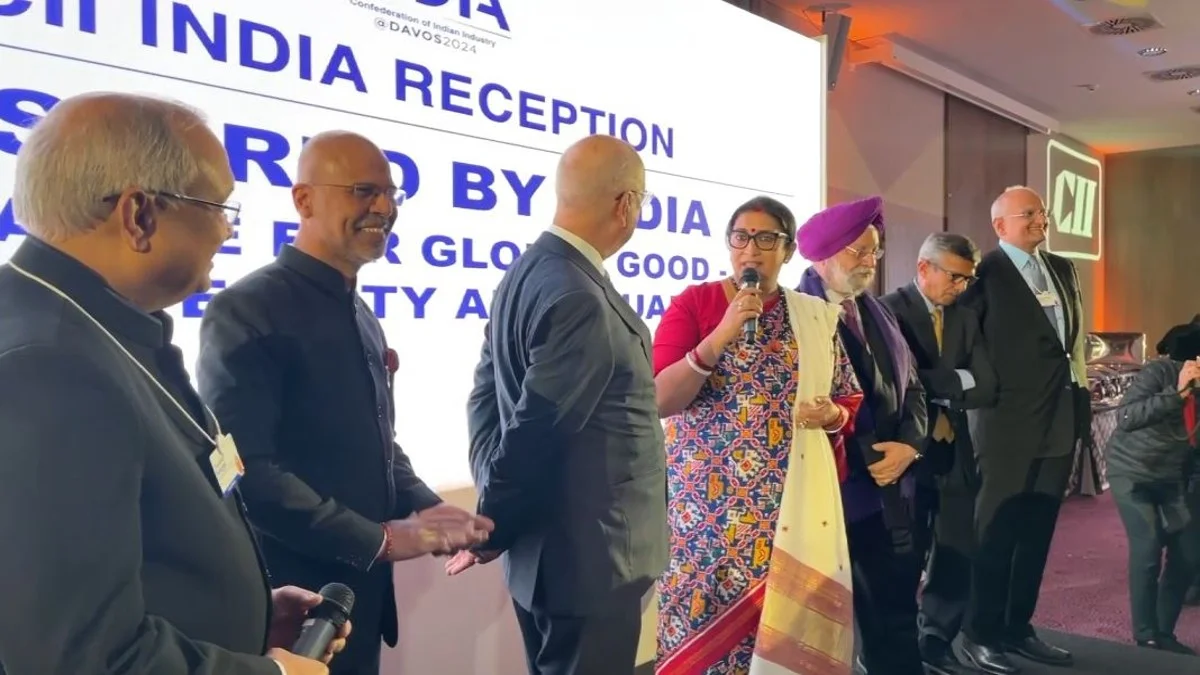
- 20 Jan 2024
Why is it in the News?
Recently, India announced a new alliance for global good, gender equity, and equality at the World Economic Forum Annual Meeting.
About Global Alliance for Global Good- Gender Equity and Equality:
- It primary aims to unite global best practices, promote knowledge-sharing, and invest in women's health, education, and enterprise.
- It follows the initiatives of the G20 framework, including the Business 20, Women 20, and G20 EMPOWER, building on the commitments of G20 leaders for the global community's benefit.
- Aligned with multiple Sustainable Development Goals (SDGs), such as Good Health and Well-Being (SDG 3), Quality Education (SDG 4), Gender Equality and Empowerment (SDG 5), and Global Partnership for Development (SDG 17), this initiative underscores India's dedication to gender equality in global development.
- Supported by the Bill and Melinda Gates Foundation, anchored by the CII Centre for Women Leadership, and with partnerships from the World Economic Forum and Invest India, the alliance reflects India's commitment to addressing gender-related issues within G20 nations under the principles of 'Vasudhaiva Kutumbakam' and 'Sabka Saath, Sabka Prayaas.'
About the World Economic Forum:
- The World Economic Forum is the International Organization for Public-Private Cooperation.
- The Forum engages the foremost political, business, cultural and other leaders of society to shape global, regional and industry agendas.
- It was established in 1971 by German engineer and economist Klaus Schwab.
- It is a not-for-profit foundation and is headquartered in Geneva, Switzerland.
- The Forum strives in all its efforts to demonstrate entrepreneurship in the global public interest while upholding the highest standards of governance.
Reports released by WEF:
-
- Global Gender Gap Index
- Global Risks Report
- Fostering Effective Energy Transition Report
- Global Cyber Security Outlook
- Global Competitiveness Report
- Travel and Tourism Development Index
ICRISAT Joins One CGIAR Global Initiative (The Hindu BusinessLine)
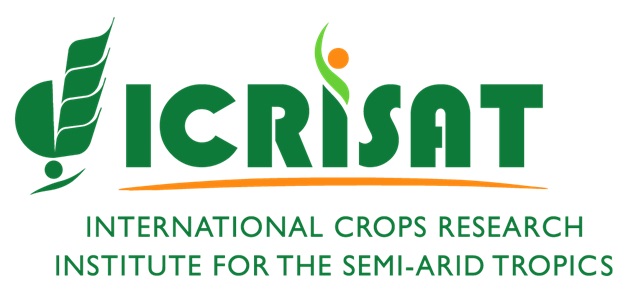
- 12 Oct 2023
Why in the News?
The International Crops Research Institute for the Semi-Arid Tropics (ICRISAT), a Hyderabad-based international research institute with a focus on tropical dryland agrifood system innovation, has joined the One CGIAR integrated partnership.
What is One CGIAR Global Initiative?
- The One CGIAR global initiative is designed to establish a cohesive approach to transform food, land, and water systems in response to the challenges posed by the climate crisis.
- This collaborative effort involves the CGIAR System Organisation and 12 research centres operating under the umbrella of One CGIAR.
- CGIAR is a publicly-funded network of research centres focused on agrifood systems, operating in over 80 countries.
Key Facts about ICRISAT:
- ICRISAT, a non-profit, non-political international research organization, is dedicated to agricultural research for development in Asia and sub-Saharan Africa.
- Its mission is to support farmers by providing improved crop varieties and hybrids, particularly aiding smallholder farmers in arid regions to combat climate change.
- The organization specializes in research on five highly nutritious, drought-tolerant crops: chickpea, pigeonpea, pearl millet, sorghum, and groundnut.
- Recognized for its impactful work, ICRISAT was awarded the 2021 Africa Food Prize for the Tropical Legumes Project, contributing to improved food security across 13 countries in sub-Saharan Africa.
- ICRISAT is headquartered in Hyderabad, Telangana State, India, with two regional hubs in Nairobi, Kenya, and Bamako, Mali.
- Through its research and initiatives, ICRISAT plays a crucial role in addressing agricultural challenges and promoting sustainable development in diverse regions.
AstroSat detects millisecond X-ray bursts from high magnetic field neutron stars (DD News)

- 26 Dec 2023
Why is it in the News?
India’s first multi-wavelength space-based observatory, AstroSat, has detected intense sub-second X-ray bursts emanating from a neutron star with an ultrahigh magnetic field, known as a magnetar.
What is X-ray Bursts?
- X-ray bursts manifest in low-mass X-ray binary systems featuring a neutron star and a low-mass main sequence star orbiting each other.
- The occurrence of these bursts is intricately linked to the gravitational dynamics of the neutron star and its companion.
- In this system, the proximity and intense gravitational forces of the neutron star cause the companion star to exceed its Roche-lobe, leading to the formation of an accretion disk around the neutron star.
- This disk becomes a repository for hydrogen drawn from the overflowing companion star.
- As hydrogen accumulates on the neutron star's surface, the extreme temperatures and pressures prevailing there catalyze its transformation into helium.
- This ongoing process results in the formation of a thin surface layer of helium.
- When this helium layer reaches a critical mass, a sudden explosive ignition occurs, elevating the entire neutron star's surface temperature to several tens of millions of degrees and releasing a burst of X-rays.
- Following the outburst, the binary system returns temporarily to a quiescent state, allowing the neutron star to reaccumulate the helium surface layer gradually.
- This cyclic process leads to the recurrence of X-ray bursts, typically unfolding at regular intervals separated by several hours or days.
About Indias’ AstroSat:
- AstroSat stands as India’s first dedicated multi-wavelength space observatory, pioneering a mission focused on the simultaneous study of celestial sources across X-ray, optical, and UV spectral bands.
- Launched with a lift-off mass of 1515 kg, AstroSat took flight aboard the Indian launch vehicle PSLV from the Satish Dhawan Space Centre in Sriharikota on September 28, 2015.
- It entered a 650 km orbit, inclined at an angle of 6 degrees to the equator.
- The Mission Operations Complex (MOX) at ISRO Telemetry, Tracking and Command Network (ISTRAC) in Bengaluru oversees the satellite throughout its mission life.
- With a minimum useful life of around 5 years, AstroSat is dedicated to achieving the following scientific objectives:
- Understanding high-energy processes in binary star systems housing neutron stars and black holes.
- Estimating magnetic fields associated with neutron stars.
- Investigating star birth regions and high-energy processes in star systems beyond our galaxy.
- Detecting new, briefly bright X-ray sources in the celestial sphere.
- Conducting a limited deep-field survey of the Universe in the Ultraviolet region.
India shedding mentality of slavery, says PM Modi (The Hindu)
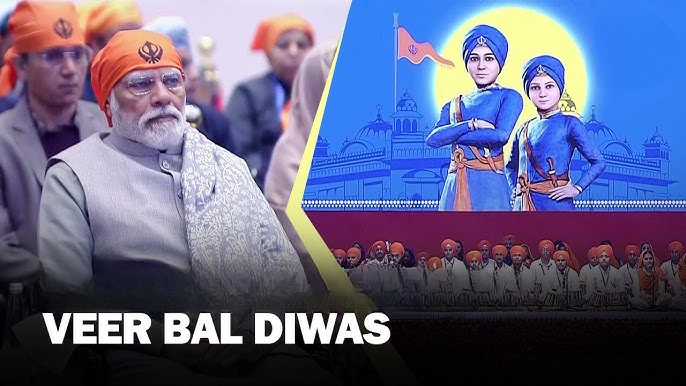
- 26 Dec 2023
Why is it in the News?
Speaking at a "Veer Bal Diwas" event to commemorate the martyrdom of two sons of Guru Gobind Singh, PM Modi said their sacrifices are not only being remembered in India but also globally through programmes in other countries as well
About Veer Bal Diwas:
- Veer Bal Diwas is observed annually on December 26th to commemorate the valour and sacrifice of the four sons of Guru Gobind Singh, the tenth Sikh guru.
- The four sons, named Zorawar Singh, Fateh Singh, Jai Singh, and Kulwant Singh, played a significant role in resisting the Mughal emperor Aurangzeb and his army.
- Zorawar Singh and Fateh Singh were captured by the Mughals at the ages of six and nine, respectively, after defending the fort of Anandpur Sahib from a siege.
- Subsequently, they were taken to Sirhind, where, steadfast in their faith, they refused to convert to Islam and were sentenced to a tragic death by being bricked alive in 1705.
- Jai Singh and Kulwant Singh, also captured at Anandpur Sahib, managed to escape from Sirhind with the assistance of loyal followers.
- They later joined their father in his final battle at Sirhind, where Guru Gobind Singh was wounded by a musket shot.
- The unwavering courage and sacrifice of Guru Gobind Singh's sons became a symbol of inspiration for generations of Sikhs, reflecting their dedication to the cause of Sikhism.
About Guru Gobind Singh:
- Guru Gobind Singh, the last of the ten Sikh Gurus, was born on December 22, 1666, in Patna, Bihar.
- His birth anniversary is observed according to the Nanakshahi calendar.
- Assuming the role of Sikh Guru at the tender age of nine after the passing of his father, Guru Tegh Bahadur, he served until his assassination in 1708.
Contributions:
- Religious: Guru Gobind Singh made profound contributions to the Sikh religion, introducing practices such as wearing a turban to cover hair.
- He laid the foundation for the Khalsa (1699), embodying the Five 'K's: kesh (uncut hair), kanga (wooden comb), kara (iron or steel bracelet), kirpan (dagger), and kachera (short breeches).
- These articles of faith became integral to the identity of a Khalsa.
- Establishing various rules for Khalsa warriors, including abstaining from tobacco, alcohol, and halal meat, Guru Gobind Singh emphasized their duty to protect innocent people from persecution.
- Guru Gobind Singh designated Guru Granth Sahib as the spiritual guide for both the Khalsas and Sikhs.
- Martial: Engaging in the battle of Muktsar in 1705, Guru Gobind Singh fiercely opposed the Mughals.
- The Battle of Anandpur in 1704 resulted in the tragic loss of the Guru's mother and two minor sons, who were executed. His eldest son also fell in battle.
- Literary: Guru Gobind Singh's legacy includes compositions like Jaap Sahib, Benti Chaupai, and Amrit Savaiye.
- Notably, he wrote the Zafarnama, a letter addressed to the Mughal Emperor Aurangzeb, showcasing his literary prowess and resilience.
Ayushman Arogya Mandir (The Hindu)
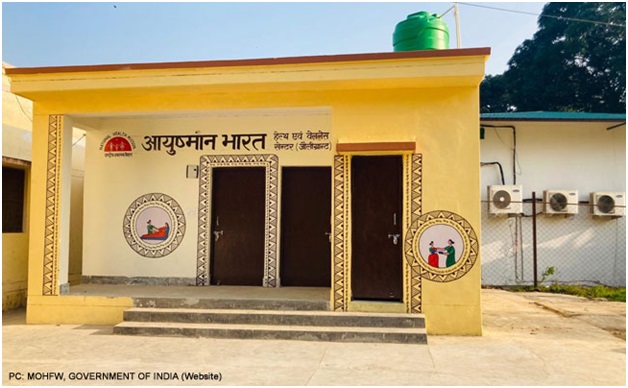
- 30 Nov 2023
Why is it in the News?
Recently, the Union Government has decided to rename the current Ayushman Bharat Health and Wellness Centres (AB-HWCs) as 'Ayushman Arogya Mandir.'
About Ayushman Arogya Mandir:
- The government has decided to rename the Ayushman Bharat-Health and Wellness Centres as 'Ayushman Arogya Mandir'
- The rebranded AB-HWCs will also have a new tagline -- 'Arogyam Parmam Dhanam'.
- Under the Government of India's flagship Ayushman Bharat Yojana, more than 1.6 lakhs AB- HWCs have been successfully established across states and UTs over the last five years with 219 crore footfalls so far.
- Ayushman Arogya Mandir is an attempt to move from a selective approach to health care to deliver a comprehensive range of services spanning preventive, promotive, curative, rehabilitative, and palliative care.
- It has two components which are complementary to each other.
- Under its first component, 1,50,000 Ayushman Arogya Mandir will be created to deliver Comprehensive Primary Health Care, that is universal and free to users, with a focus on wellness and the delivery of an expanded range of services closer to the community.
- The second component is the Pradhan Mantri Jan Arogya Yojana (PM-JAY) which provides health insurance cover of Rs. 5 lakhs per year to over 10 crore poor and vulnerable families seeking secondary and tertiary care.
- Ayushman Arogya Mandirs are envisaged to deliver an expanded range of services that go beyond Maternal and child health care services.
- It includes care for non-communicable diseases, palliative and rehabilitative care, Oral, Eye, and ENT care, mental health, and first-level care for emergencies and trauma , including free essential drugs and diagnostic services
- More than 2.71 crore wellness sessions have been held at these centers.
High-energy Particle "Amaterasu" (Indian Express)

- 27 Nov 2023
Why is it in the News?
Scientists have detected one of the most powerful cosmic rays ever slamming into Earth but they have no idea what caused it or where it came from.
What is Amaterasu?
- The particle, named Amaterasu after the sun goddess in Japanese mythology, is one of the highest-energy cosmic rays ever detected.
- The Amaterasu particle has an energy exceeding 240 exa-electron volts (EeV).
- It is millions of times more than particles produced in the Large Hadron Collider, the most powerful accelerator ever built, and equivalent to the energy of a golf ball traveling at 95mph.
- It comes only second to the Oh-My-God particle, another ultra-high-energy cosmic ray that came in at 320 EeV, detected in 1991.
- Amaterasu appears to have emerged from the Local Void, an empty area of space bordering the Milky Way galaxy.
What are Cosmic Rays?
- Cosmic rays are high-energy particles, primarily protons and atomic nuclei, that originate from outer space and bombard Earth from all directions.
- They possess extraordinary energies, often exceeding those achievable in human-made accelerators.
- Created through various astrophysical processes, such as supernova explosions and the remnants of massive stars, cosmic rays travel through the vast expanse of space.
- Upon entering Earth's atmosphere, they collide with air molecules, initiating cascades of secondary particles.
- These rays play a crucial role in astrophysics, providing insights into the universe's most energetic phenomena.
- They contribute to our understanding of cosmic structures, magnetic fields, and the dynamics of celestial bodies.
- Despite their significance, the origins of certain ultra-high-energy cosmic rays remain mysterious, prompting ongoing research to unveil the secrets of these enigmatic particles.
Green Rising initiative launched at RewirEd summit to empower Youth-Led climate solutions (DD News)
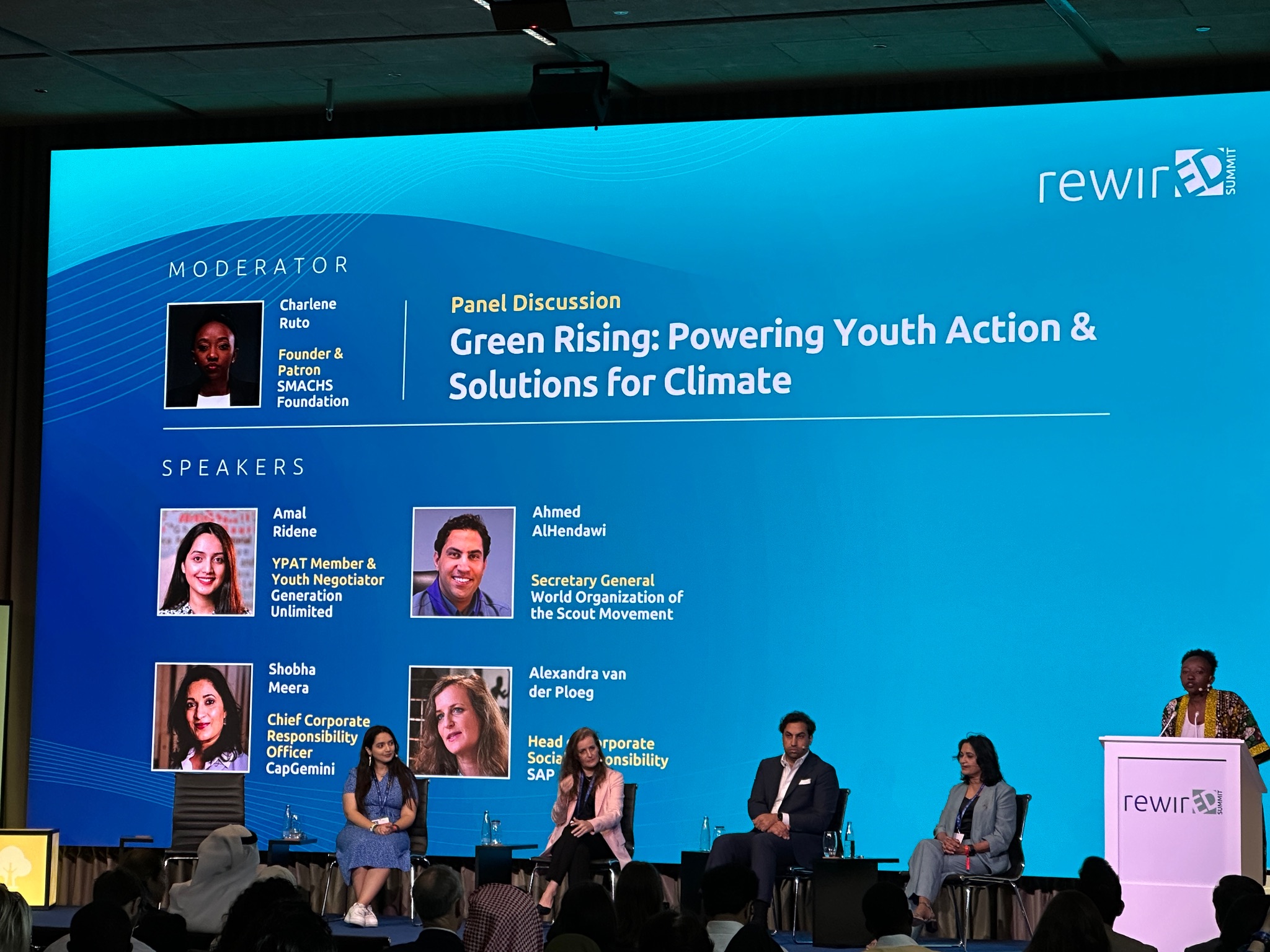
- 09 Dec 2023
What is the Green Rising Initiative?
- The "Green Rising" initiative focuses on engaging youth for impactful environmental actions at the grassroots level, aligning with the global effort to address the severe impacts of climate change.
- This initiative encompasses both the global "Green Rising" initiative and the "Green Rising India Alliance," a collaborative endeavor that brings together UNICEF, Generation Unlimited, and a diverse network of public, private, and youth partners.
- The primary objective is to mobilize millions of young individuals globally, encouraging their active engagement in green initiatives aimed at addressing and adapting to the profound impacts of climate change within their communities.
- In India, this effort is channelled through the YuWaah campaign, which specifically focuses on harnessing the energy and commitment of the youth to drive impactful environmental actions at the grassroots level.
About UNICEF:
UNICEF, or the United Nations International Children's Emergency Fund, is a specialized agency of the United Nations committed to promoting the well-being and rights of every child globally.
- Foundation and Establishment: Established in 1946 by the United Nations General Assembly, UNICEF was originally designed to provide emergency food and healthcare to children in countries devastated by World War II.
- Over time, UNICEF's scope evolved to include long-term developmental programs, focusing on education, healthcare, nutrition, clean water, sanitation, and protection for children in need.
- UNICEF is governed by an Executive Board consisting of 36 members who are elected to terms of three years by the United Nations Economic and Social Council.
- Universal Presence: UNICEF operates in over 190 countries and territories worldwide, making it one of the most extensive and widely recognized humanitarian organizations globally.
- Child Rights Advocacy: UNICEF is a leading advocate for children's rights, working to ensure that every child has the right to survive, thrive, and reach their full potential, regardless of their background or circumstances.
- Emergency Response: In times of crises, including natural disasters, conflicts, and pandemics, UNICEF plays a crucial role in providing immediate and life-saving assistance to affected children and communities.
- Partnerships and Collaborations: UNICEF collaborates with governments, non-governmental organizations (NGOs), other UN agencies, and the private sector to implement its programs and maximize its impact.
- Funding Mechanism: UNICEF is funded entirely by voluntary contributions from governments, private donors, businesses, and the general public. It relies on these funds to carry out its programs and respond to emergencies.
- Focus on Equality and Inclusion: UNICEF emphasizes the importance of equality and inclusion, working to address disparities and ensure that the most vulnerable children, including those with disabilities or from marginalized communities, are not left behind.
- Global Campaigns: UNICEF spearheads global campaigns to address critical issues affecting children, such as vaccination drives, education initiatives, and efforts to eliminate child labour and violence against children. These campaigns aim to rally public support and create awareness about the challenges faced by children worldwide.
- It was awarded the Nobel Prize for Peace in 1965 for the “promotion of brotherhood among the nations”.
- Headquarters: New York City
India-Middle East-Europe Economic Corridor (Financial Express)
- 18 Sep 2023
What is the News ?
Presently, the Indian Coast Guard Ship (ICGS) Samudra Prahari is on an international mission covering ASEAN countries.
Facts About:
- Samudra Prahari is an Indian Coast Guard Ship (ICGS) specifically designed for pollution control purposes.
Key Highlights:
- It holds the distinction of being Southeast Asia's pioneering pollution control vessel.
- Equipped with cutting-edge Pollution Response and Control equipment for effectively managing oil spills within the Exclusive Economic Zone.
- Features tanks and inflatable barges for the storage of oil spills.
- Capable of seamless oil recovery operations with a substantial storage capacity of 500 KL.
- Designed to accommodate and operate a twin-engine Advanced Light Helicopter, along with the capability to handle and embark Chetak helicopters.
- Notable features encompass an integrated platform management system, power management system, high-powered external firefighting system, and an indigenous gun mount with firefighting capabilities.
- The vessel possesses unmanned machinery operation capabilities for enhanced efficiency.
India-Middle East-Europe Economic Corridor (Indian EXpress)
- 11 Sep 2023
What is the News ?
The Prime Minister of India recently declared the start of a massive economic corridor connecting India, the Middle East, and Europe.
Facts About:
- The project involves India, the UAE, Saudi Arabia, the European Union, France, Italy, Germany, and the US.
- Its goal is to boost trade between these countries, especially in energy products.
- The IMEC has two parts:
An Eastern Corridor linking India to the Gulf region and
A Northern Corridor connecting the Gulf region to Europe.
- It includes railways, ship-rail transit, and road routes.
- This corridor will have a railway, an electricity cable, a hydrogen pipeline, and a high-speed data cable.
- In the future, it will play a big role in connecting India, West Asia, and Europe economically.
- This rail and shipping corridor is part of the Partnership for Global Infrastructure Investment (PGII).
- Why is it important?
- It will increase prosperity by enhancing energy and digital communications flow among these nations.
- The project will also address the infrastructure needs of developing countries in terms of growth.
